

Sparta Travel Guide
Last Updated: November 30, 2023
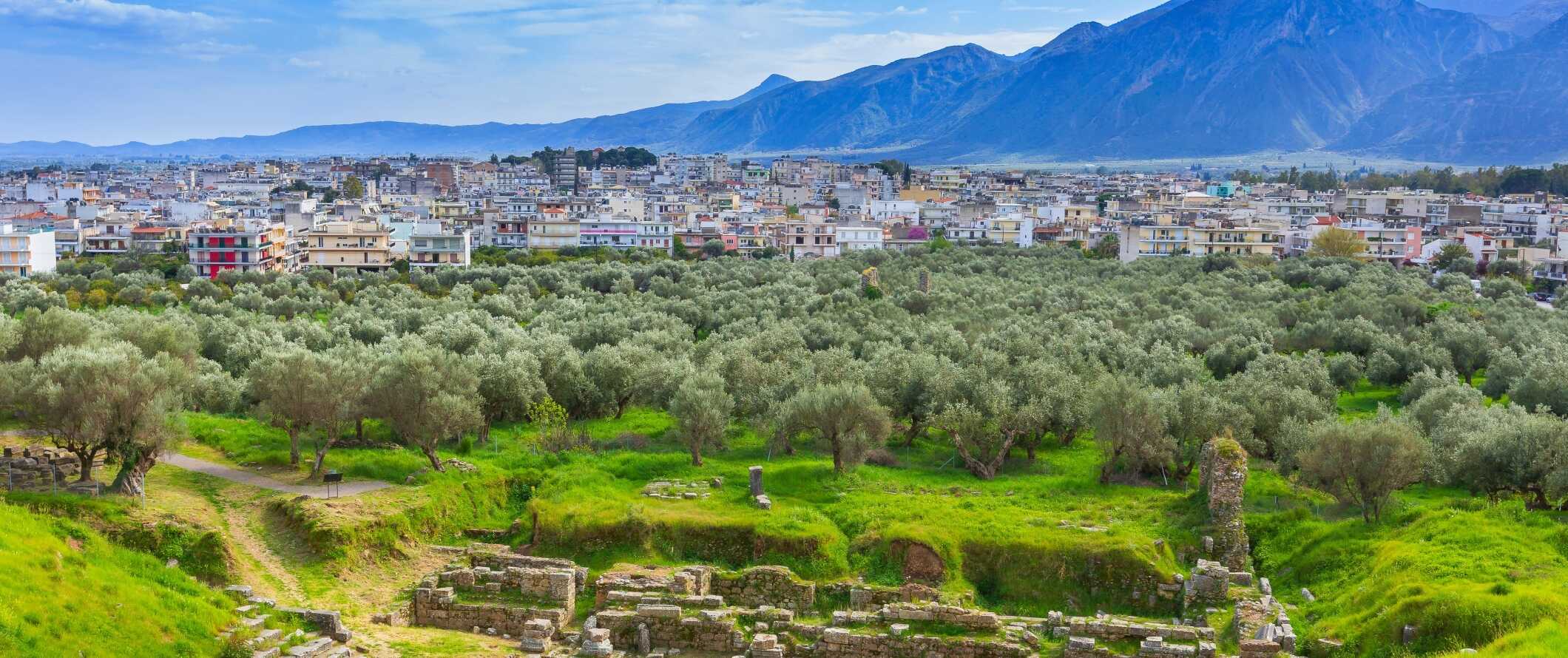
Sparta was the ancient rival of Athens, known for its fierce warriors and military culture (as showcased in the historically inaccurate movie 300 ). These days, the city doesn’t get the visitors Athens does but it does still have a lot of ruins to explore.
While Sparta is much smaller than Greece’s capital, there is no shortage of things to do, excursions to take, and places to eat when you visit.
It’s an often-overlooked city (most travelers skip this entire area as it’s out of the way) but you can get all the history of Greece without the tourists of Athens if you visit. The city is small and you only really need a couple of nights to check it all out. If you have a couple of extra days, it’s worth the drive or bus ride from Athens — especially if you’re a history buff.
This travel guide to Sparta can help you plan your trip so you can make the most of your trip to this underrated region without breaking the bank!
Table of Contents
- Things to See and Do
- Typical Costs
- Suggested Budget
- Money-Saving Tips
- Where to Stay
- How to Get Around
- How to Stay Safe
- Best Places to Book Your Trip
- Related Blogs on Sparta
Top 5 Things to See and Do in Sparta
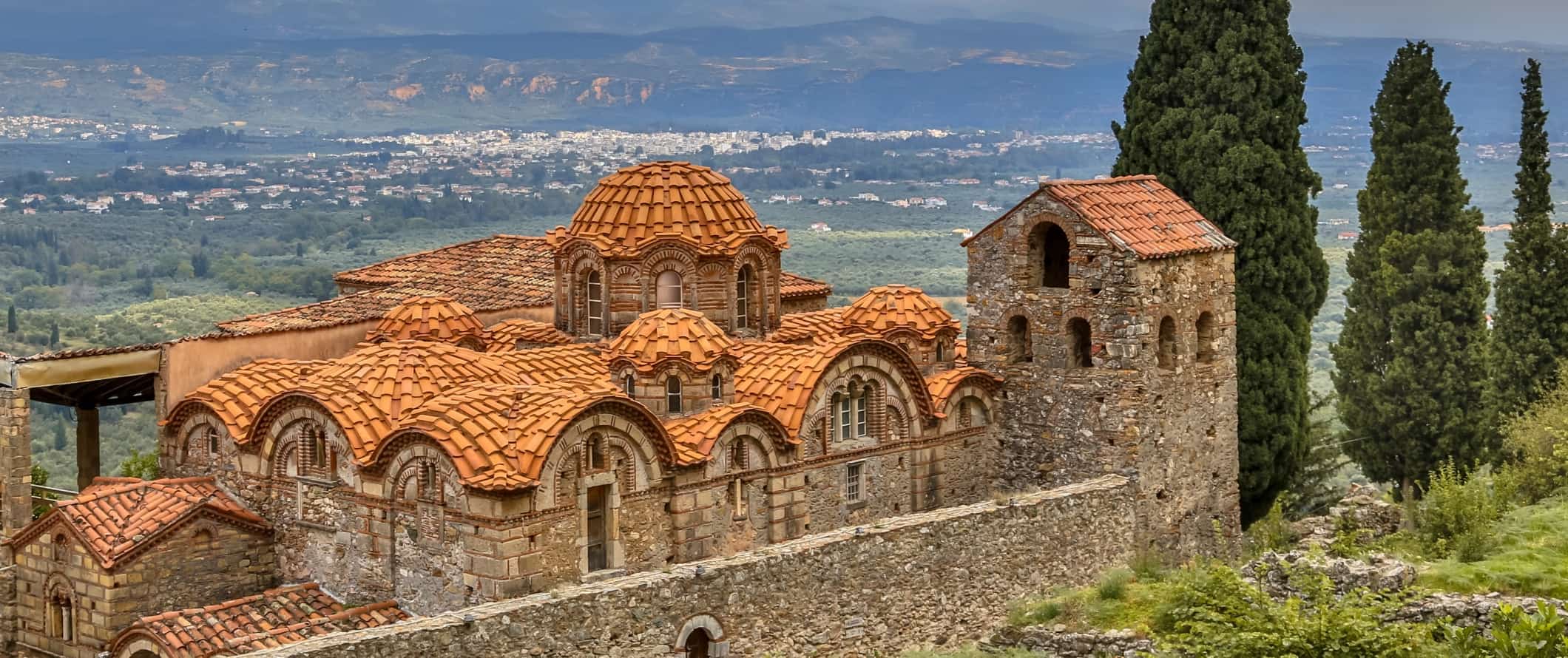
1. See the King Leonidas Statue
King Leonidas was one of the most famous kings of ancient Sparta, known for his defiant stand against the Persians at Thermopylae in 480 BCE. Technically named The Memorial in Thermopylae, it recognizes not only King Leonidas but the legendary 300 soldiers that fought along with him. Located in front of a soccer stadium, this statue is a testament to the fading glory of the Spartan legacy.
2. Visit the Archaeological Museum of Sparta
One of Greek’s oldest archaeology museums, this museum focuses on Sparta’s vibrant and wealthy past, housing thousands of artifacts from excavations of Sparta’s ancient Acropolis. Though the museum is fairly small, there’s a lot here, with reliefs of Helen and Menelaus, sculptures of King Leonidas, bronze figurines, heads and torsos from statues of gods, votive masks, and more. You can also see intricate mosaics from the Hellenistic and Roman eras. Admission is 3 EUR.
3. Tour the Diros Caves
The Diros Caves, which formed hundreds of thousands of years ago, consist of a 5-kilometer (3-mile) network of flooded caves, most of which are part of an underground lake. Prehistoric pottery, animal bones, and remains of ancient settlements have been found in the caves as well. A 30-minute boat tour takes you through the passageways to admire the stunning stalagmites and stalactites. Admission is 10 EUR. Note: Boat rides are currently suspended until further notice.
4. Visit Mystras
The ancient city of Mystras has some of the best-preserved Byzantine ruins in the area. During its heyday, it was second only to Constantinople (now Istanbul). Set against the slopes of Mt. Taygetos, this UNESCO World Heritage Site contains the remains of a castle, libraries, church domes, houses, monasteries, and crumbled walls. Prepare to do lots of walking around the site, which also offers incredible views of the surrounding countryside. It’s just located around 5 kilometers (3 miles) from the modern town of Sparta and admission is 12 EUR.
5. Visit the Museum of the Olive and Olive Oil
This whole museum is dedicated to olives and olive oil. It takes you through the culture, history, and technology of olive oil production in Greece, as well as all the uses of olive oil in everyday Greek life. On display are items like fossilized olive leaves from 60,000 years ago, ancient and contemporary art depicting the importance of the olive, and replicas of ancient olive presses. You can also check out the reconstructed 20th-century olive presses in the courtyard. Admission is 4 EUR and it’s open every day except Tuesday from 10am-5pm.
Other Things to See and Do in Sparta
1. walk around the modern town.
Travelers don’t often hang out in the modern town of Sparta, which is why you should check it out. Head to the main square where the town hall is and enjoy some people-watching at one of the cafes. There are also a handful of ouzeries (a Greek tavern that serves ouzo, a Greek liquor) in the square if you would like to enjoy the country’s favorite alcoholic beverage.
2. Explore the ancient Sparta archaeological site
There’s not much left from the ancient city, located north of the Leonidas statue, but a walkthrough leads to where the acropolis and the agora stood from the 2nd-century BCE until the Roman era. You can also find the remains of an ancient theater (it used to be the second-largest in Greece) and the Sanctuary of Athena (a place where people could worship Athena and leave offerings). It’s free to wander around.
3. Visit the Sanctuary of Artemis
On the north side of town are the remains of the Sanctuary of Artemis Orthia, the most important deity for the Spartans. Artemis was the goddess of wild animals and the hunt as well as chastity and childbirth. The Orthia moniker mostly likely comes from a local deity who became merged with Artemis over the centuries as it is not found anywhere else in Greece. The Sanctuary was the site of some rather violent rituals, including the flogging of young Spartan boys until they bled. Since Spartan culture revolved around military service, this was considered an important way to prepare the children for the challenges ahead. Most of the ruins are Roman or Byzantine, but it’s still worth a visit.
4. Check out the Koumantareios Art Gallery
Opened in 1982, this gallery features a permanent collection of around 40 paintings from the 16th to the 19th century. There’s also a temporary, rotating exhibit of pieces from the National Art Gallery in Athens. Housed in a Neoclassical 20th-century mansion, the gallery is a small and intimate space. It’s free to visit.
5. Explore the Menelaion
A few miles outside of the city on the hill of the Prophet Elias lies the Menelaion, a 5th-century BCE shrine that was built to honor King Menelaus, husband of Helen of Troy (who was considered the most beautiful woman in the world). There is not a lot left to see of this site except for its crumbling ruins, but it’s worth a visit to walk around here if you have extra time in Sparta. There’s no admission fee.
6. Make some mosaic art
Dimitra, a self-taught mosaic artist, hosts art classes in her cozy workshop. She makes her mosaic pieces by hand so that each section of glass is unique. If you want to try your hand at making your own mosaic, she hosts three-hour workshops in her courtyard for 70 EUR (there are also 90-minute workshops). If you don’t want to do a workshop, you can simply visit to browse the shop and buy some lovely art.
7. Go hiking at Taygetus Mountain
At 2,405 meters (7,890 feet), Mount Taygetus is the highest peak in the range of the same name. It dominates Sparta’s skyline and makes for a nice outdoor adventure if you have the time. You can take one of the many routes as several-hour day hikes, or summit the peak as an overnight trek.
8. Watch the Spartathon
If you happen to be in Sparta in September, you can witness the historic ultra-distance race, the Spartathon. This 245-kilometer (152-mile) race recreates the ancient run that, in 490 BCE, the runner Pheidippides completed between Athens and Sparta when he was sent to request wartime assistance. Runners from all over the world come to compete in the event!
For more information on other destinations in Greece, check out these guides:
- Athens Travel Guide
- Corfu Travel Guide
- Crete Travel Guide
- Ios Travel Guide
- Mykonos Travel Guide
- Naxos Travel Guide
- Santorini Travel Guide
Sparta Travel Costs
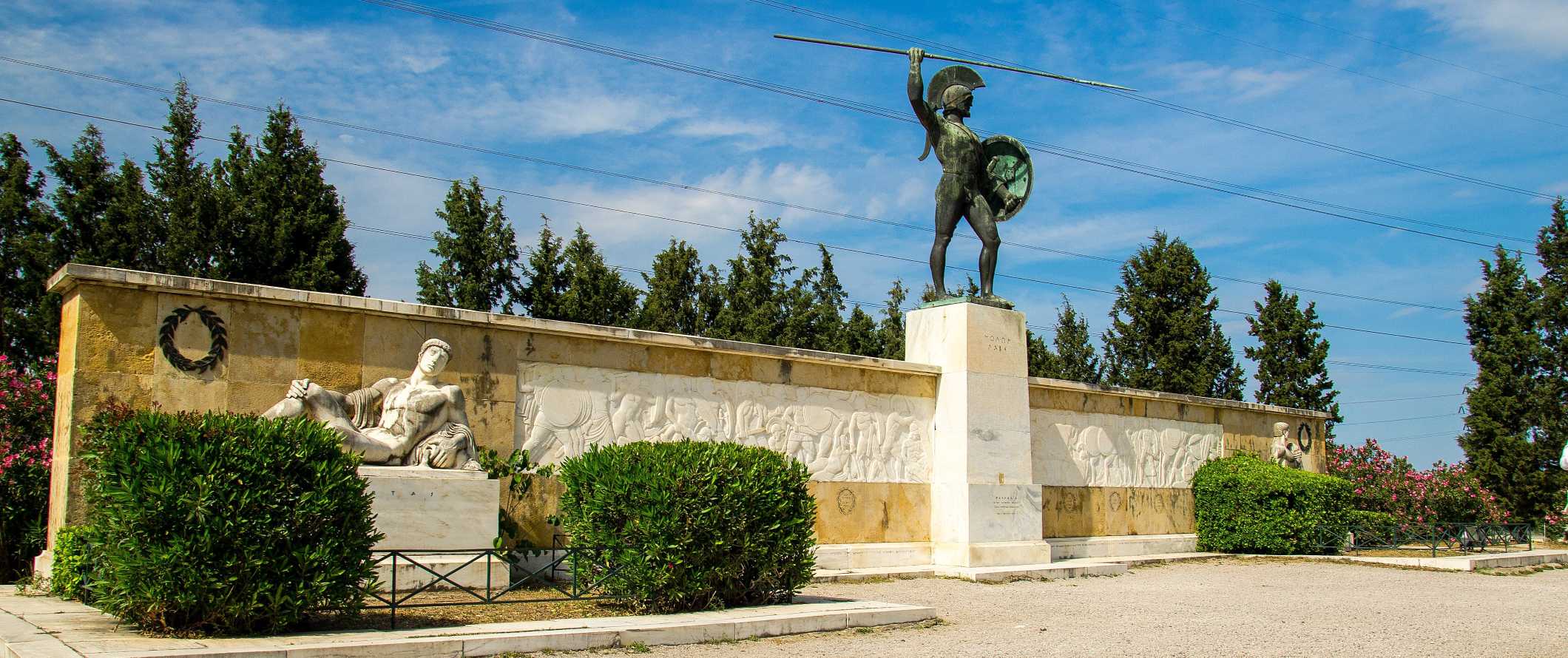
For those traveling with a tent, camping is available outside the city. A basic plot for one person without electricity costs 8 EUR per night (if you don’t have your own, you can rent a tent for an additional 8 EUR).
Budget hotel prices – A room with a private bathroom in a two-star hotel starts at 45-55 EUR regardless of the season. Expect basic amenities like TV and free Wi-Fi.
Airbnb is available in Sparta, with full apartments starting at 35-45 EUR. There are few private rooms available, and most cost the same (or more) as an entire place.
Food – Traditional Greek cuisine is very healthy with a lot of fresh vegetables, olive oil, lamb, fish, pork, cheeses (especially feta), and yogurts. Filo pastries stuffed with meat or spinach and cheese are a local favorite as are souvlaki and gyros.
Food is cheap in Sparta. Street food like traditional gyros or souvlaki cost around 5 EUR each. At a typical taverna, Greek salads usually cost around 5-6 EUR while a main dish like moussaka or souvlaki is about 7-9 EUR. An eggplant salad is less than 5 EUR.
For drinks in a bar or restaurant, a beer or glass of wine costs 2-4 EUR, a glass of ouzo is 3 EUR, and a cocktail is 6-8 EUR. A cappuccino or latte is 3-4 EUR.
Higher-end restaurants aren’t typical in Sparta but expect to pay around 13-16 EUR for dishes like a seafood risotto or 18 EUR for filet mignon.
If you cook for yourself, you can spend as little as 40 EUR on groceries per week, which includes basic staples like pasta, rice, vegetables, and some meat.
Backpacking Sparta Suggested Budgets
If you’re backpacking Sparta, expect to spend about 45 EUR per day. This assumes you’re camping, eating cheap fast food and cooking some meals, walking everywhere, limiting your drinking, and sticking to mostly free activities like wandering the ruins. If you plan on drinking, add 5-10 EUR more to your budget per day.
On a mid-range budget of about 105 EUR per day, you can stay in a budget hotel room, eat out for all your meals, take an occasional taxi to get around, enjoy a few drinks, and do some paid activities like visiting the museums and the caves.
On a “luxury” budget of 215 EUR per day or more, you can stay in a hotel or private Airbnb, eat out anywhere you want, drink more, rent a car to explore the region, and do more paid tours and activities. This is just the ground floor for luxury though. The sky is the limit!
Since Sparta isn’t a very touristy area, you don’t have to worry much about prices fluctuating in the on-season and off-season.
You can use the chart below to get some idea of how much you need to budget daily, depending on your travel style. Keep in mind these are daily averages – some days you spend more, some days you spend less (you might spend less every day). We just want to give you a general idea of how to make your budget. Prices are in EUR.
Sparta Travel Guide: Money-Saving Tips
Sparta is a pretty inexpensive city. It’s more of a “local place to live” than a hub of tourist activity and as such prices are a lot cheaper than elsewhere in Greece. Here are some of my favorite ways to cut your costs in Sparta:
- Use the Greek salad/bread rule – Is a restaurant cheap or expensive? Here’s how to find out: if the bread cover is .50 EUR or a Greek salad is less than 7 EUR, the restaurant is cheap. If the cover is around 1 EUR and a salad is 7-8.50 EUR, the prices are average. Anything more than that and the place is expensive.
- Eat super cheap – Gyros (and other street snacks) usually only cost a few euros. They are quick and easy and can keep you full for 10 EUR per day!
- Take a self-guided tour – Don’t indulge in the guided tours that are often very costly. The ruins in the area are easy to get around and visit on your own.
- Stay with a local – If you plan ahead, you can usually find really nice Couchsurfing hosts all throughout Sparta. This way, you not only have a place to stay, but you’ll have a local host that can tell you the best places to go and things to see. There aren’t many though so be sure to send your request early!
- Bring a water bottle – The tap water here is safe to drink so bring a reusable water bottle to save money and reduce your plastic use. LifeStraw is my go-to brand as their bottles have built-in filters to ensure your water is always clean and safe.
Where to Stay in Sparta
Sparta doesn’t have any hostel options, but fortunately, there are lots of budget-friendly hotels and small apartment rentals. These are my recommended places to stay in Sparta:
- Castle View Camping and Bungalows
- Lakonia Hotel
How to Get Around Sparta
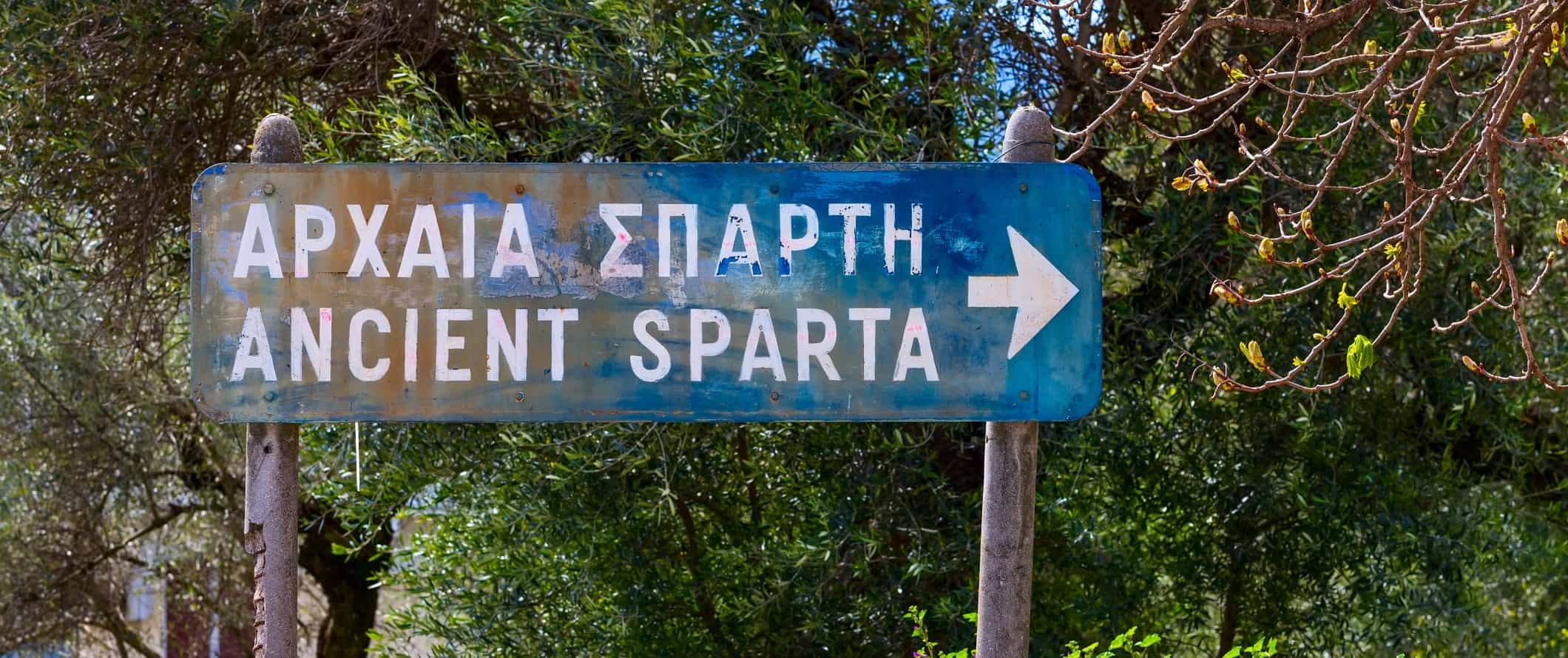
Taxi – Taxis are cheap here and they’re really your only method of getting to attractions outside of town (like Mystras). A taxi from Sparta to Mystras should cost less than 10 EUR.
When to Go to Sparta
Summer in Sparta is hot. The average daily temperature in July-August is 34°C (93°F). There’s not much relief here if you want to escape the heat either — the sea is around 100 kilometers (62 miles) away. Walking around in the sweltering heat can be a bit much, so I’d avoid coming in the middle of the summer if you can.
May-June and September-October are the best times to visit as the weather is much more comfortable. It averages around 22-28°C (70-82°F), so you’ll be able to walk around and explore without sweating bullets.
Winter temperatures average 10°C (50°F) so it’s still warm enough to visit, however, some businesses shut down during this time so I’d avoid visiting in the winter if you can.
How to Stay Safe on Sparta
Sparta is a very safe place to travel. Violent crime is rare in Sparta so petty crime like pick-pocketing is your only real concern (though it’s also uncommon). Keep an eye on your possessions when out and about and don’t flash your valuables just to be safe.
If you’re visiting in the summer, always bring water and sunscreen and wear a hat as heat stroke can occur.
If you rent a vehicle, don’t leave any valuables in it overnight. Break-ins are rare but it’s always better to be safe than sorry.
Solo female travelers should generally feel safe here, however, the standard precautions apply (never leave your drink unattended at the bar, never walk home alone intoxicated, etc.).
Scams in Sparta are rare, however, if you’re worried about getting ripped off you can read about common travel scams to avoid here .
Always trust your gut instinct. Make copies of your personal documents, including your passport and ID. Forward your itinerary along to loved ones so they’ll know where you are.
If you do experience an emergency, dial 112 for assistance.
The most important piece of advice I can offer is to purchase good travel insurance. Travel insurance protects you against illness, injury, theft, and cancellations. It’s comprehensive protection in case anything goes wrong. I never go on a trip without it as I’ve had to use it many times in the past.
Sparta Travel Guide: The Best Booking Resources
These are my favorite companies to use when I travel. They consistently have the best deals, offer world-class customer service and great value, and overall, are better than their competitors. They are the companies I use the most and are always the starting point in my search for travel deals.
- Skyscanner – Skyscanner is my favorite flight search engine. They search small websites and budget airlines that larger search sites tend to miss. They are hands down the number one place to start.
- Hostelworld – This is the best hostel accommodation site out there with the largest inventory, best search interface, and widest availability.
- Booking.com – The best all around booking site that constantly provides the cheapest and lowest rates. They have the widest selection of budget accommodation. In all my tests, they’ve always had the cheapest rates out of all the booking websites.
- HostelPass – This new card gives you up to 20% off hostels throughout Europe. It’s a great way to save money. They’re constantly adding new hostels too. I’ve always wanted something like this and glad it finallt exists.
- Get Your Guide – Get Your Guide is a huge online marketplace for tours and excursions. They have tons of tour options available in cities all around the world, including everything from cooking classes, walking tours, street art lessons, and more!
- The Man in Seat 61 – This website is the ultimate guide to train travel anywhere in the world. They have the most comprehensive information on routes, times, prices, and train conditions. If you are planning a long train journey or some epic train trip, consult this site.
- Rome2Rio – This website allows you to see how to get from point A to point B the best and cheapest way possible. It will give you all the bus, train, plane, or boat routes that can get you there as well as how much they cost.
- FlixBus – Flixbus has routes between 20 European countries with prices starting as low 5 EUR! Their buses include WiFi, electrical outlets, a free checked bag.
- SafetyWing – Safety Wing offers convenient and affordable plans tailored to digital nomads and long-term travelers. They have cheap monthly plans, great customer service, and an easy-to-use claims process that makes it perfect for those on the road.
- LifeStraw – My go-to company for reusable water bottles with built-in filters so you can ensure your drinking water is always clean and safe.
- Unbound Merino – They make lightweight, durable, easy-to-clean travel clothing.
- Top Travel Credit Cards – Points are the best way to cut down travel expenses. Here’s my favorite point earning credit cards so you can get free travel!
- Ferry Hopper – If you’re looking to book your ferries, this website is an easy way to search the various companies, piece together routes, and book your tickets.
Sparta Travel Guide: Related Articles
Want more info? Check out all the articles I’ve written on backpacking/traveling Greece and continue planning your trip:
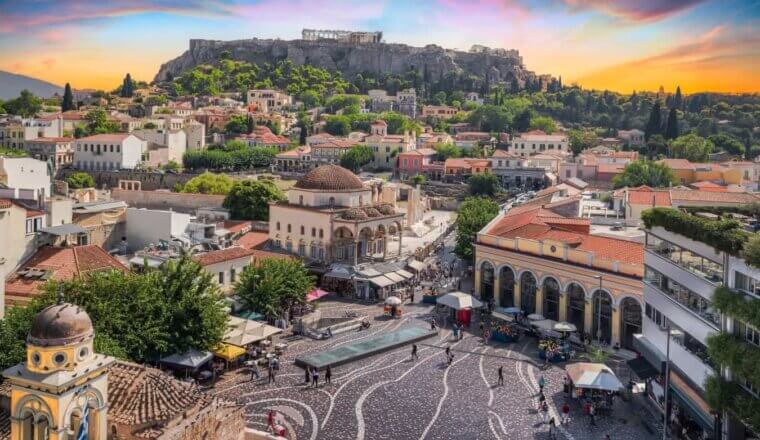
The 6 Best Hotels in Athens
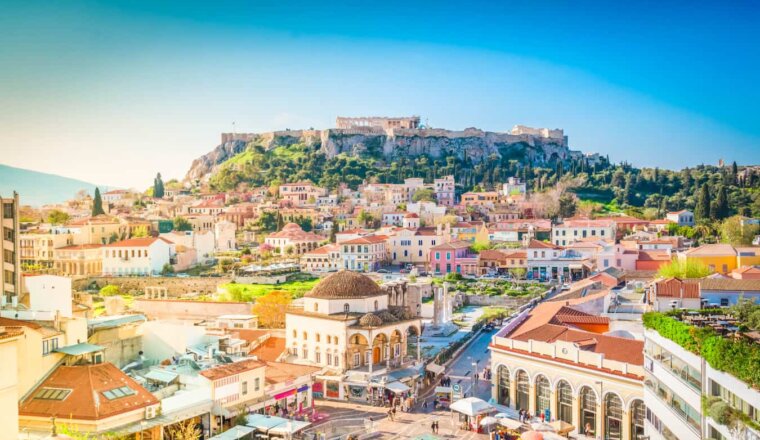
The 6 Best Hostels in Athens
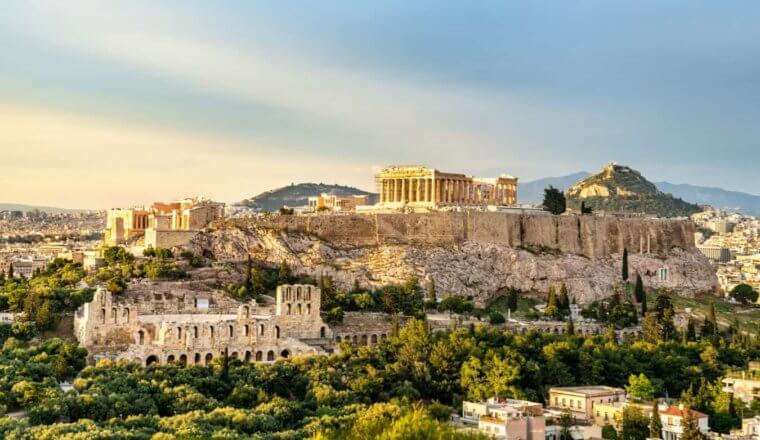
Where to Stay in Athens: The Best Neighborhoods for Your Visit
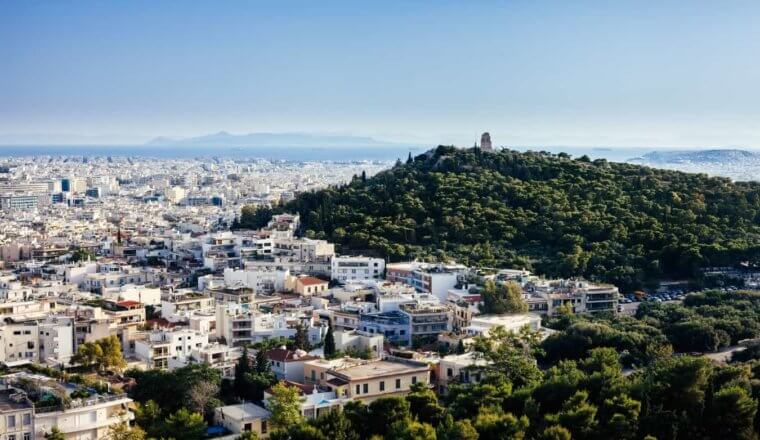
The Best Walking Tours in Athens
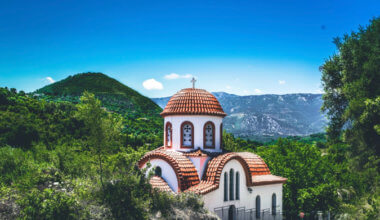
Traveling Greece: How Much Does It Cost?
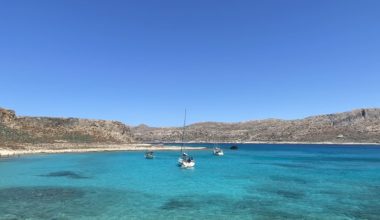
Fulfilling Childhood Dreams in Crete
Get your free travel starter kit.
Enter your email and get planning cheatsheets including a step by step checklist, packing list, tips cheat sheet, and more so you can plan like a pro!

- Where To Stay
- Transportation
- Booking Resources
- Related Blogs
- Walking tours
- Local Experiences
- History & Mythology tours
- Cultural & Heritage tours
- Private tours
- Athens excursions
- All Themed Tours
- Curated Trips

- Tailor-Made

- Themed Tours
Sparta: Things to do and see in the Greek city
As soon as you arrive in the Greek city of Sparta, you are probably in awe by the fact that you are stepping on the same soil as your heroes. As expected, the modern city is very different than the ancient Greek city-state of Sparta. This difference is even more apparent in Sparta than in other cities of Greece (take Athens for example). The reason is dual; first, ancient Spartans were warriors, not creators of grand buildings and monuments. Secondly, much of what was survived the centuries was destroyed by Michel Fourmont, a French antiquarian and classical scholar. So, discovering the city of Menelaos and Leonidas is not an easy task. This is why we gathered here for you the best things to do in Sparta, with tips!
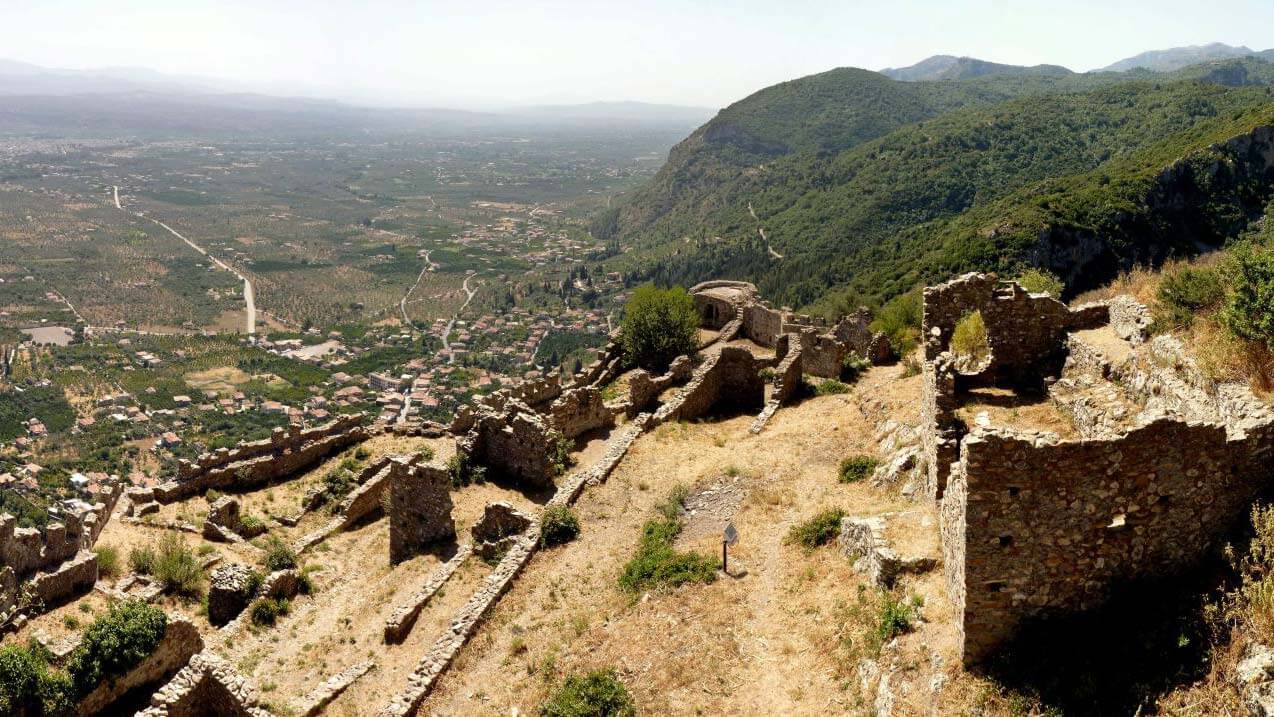
1. The Archaeological Museum of Sparta
Start your exploration from the Archaeological Museum in the city center. Housed in a beautiful neoclassical building with a garden adorned with statues, it is the first Greek museum built in a provincial town to highlight the antiquities of the area. The Museum opens its doors and encourages visitors to admire rare exhibits from ancient and Roman times. The exhibits include sculptures, architectural members, sections of mosaic floors, ceramics, inscribed columns, figurines and votive clay masks. An exhibit that is definitely worth seeing is the bust of a ‘hoplite’ (a Spartan warrior), known as ‘Leonidas’ from the 5th century B.C.
2. The statue of Leonidas
The most famous statue of the brave King may be in Thermopylae, but he could not be absent from his birthplace, could he now! Continuing your walk to the imposing Municipality Building you will find the trademark of Sparta, the statue of Leonidas, which stands haughtily on the most central street of the city. The majestic and impressive statue of the king of Sparta was placed there in 1969 and is probably the most photographed landmark in the city.
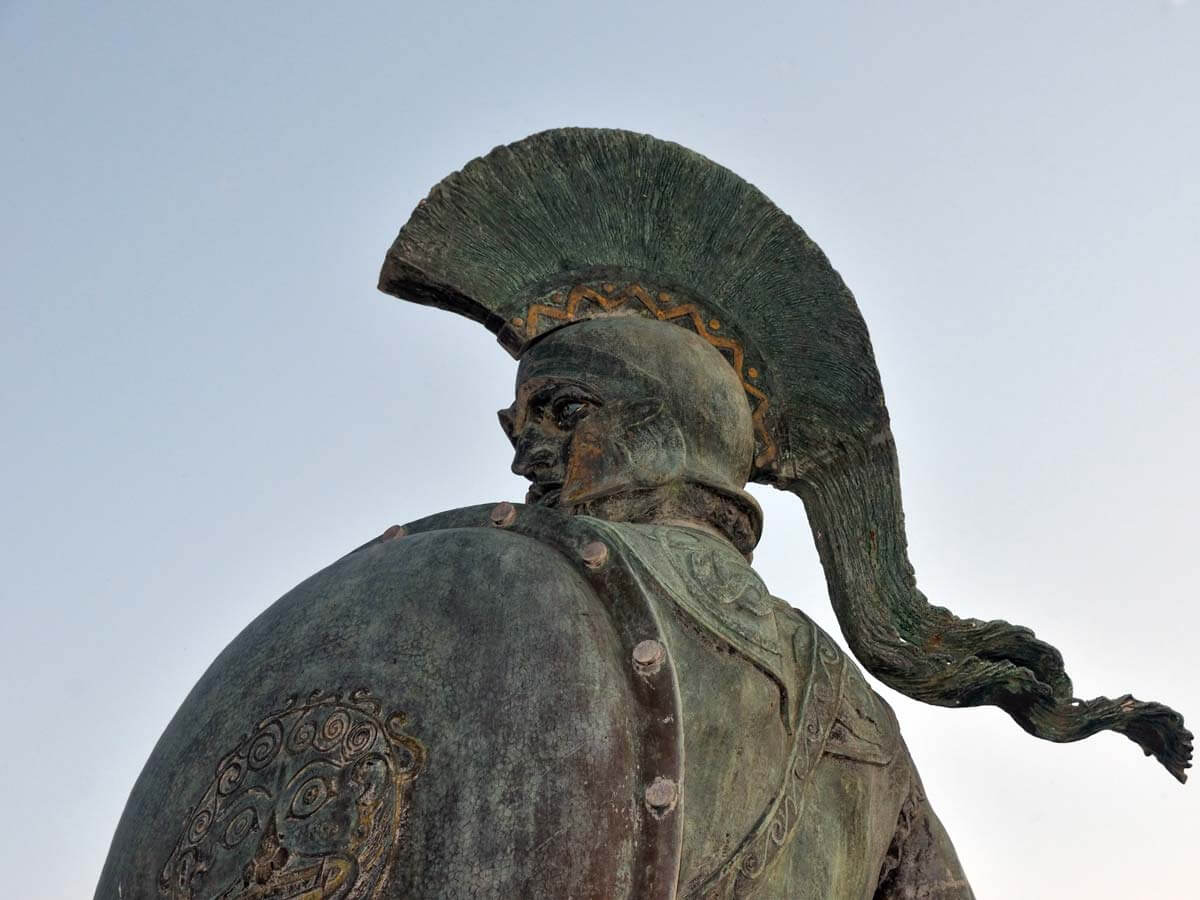
3. The Tomb of Leonidas
When moving north of the city, you will find yourselves admiring the Tomb of Leonidas or "Leonideion", a temple-shaped building of antiquity where according to tradition the bones of the legendary king Leonidas were transported. Although there is no indication of the association of the temple with the legendary king of Sparta, both the local tradition and the traveler Pausanias, express the view that the bones of Leonidas were transported and buried there from Thermopylae. Thus, the monument was identified in the popular consciousness with the tomb of Leonidas. Pausanias also mentions that the tomb was located west of the market, opposite the theater, and that games were held here every year!
4. Museum of Olive and Greek Olive Oil
Also noteworthy is the Museum of Olive and Greek Olive Oil , located in the city center which is open all year round. It offers you the opportunity to see the very first testimonies about the presence of the olive tree and the production of olive oil in Greece. For each historical period, you will discover the contribution of the olive and olive oil to the economy and to everyday life: nutrition, body care, but also now outdated uses, such as lighting. You will also see how the olive acquires a symbolic dimension in the mythology, religion, manners and customs of the Greeks.
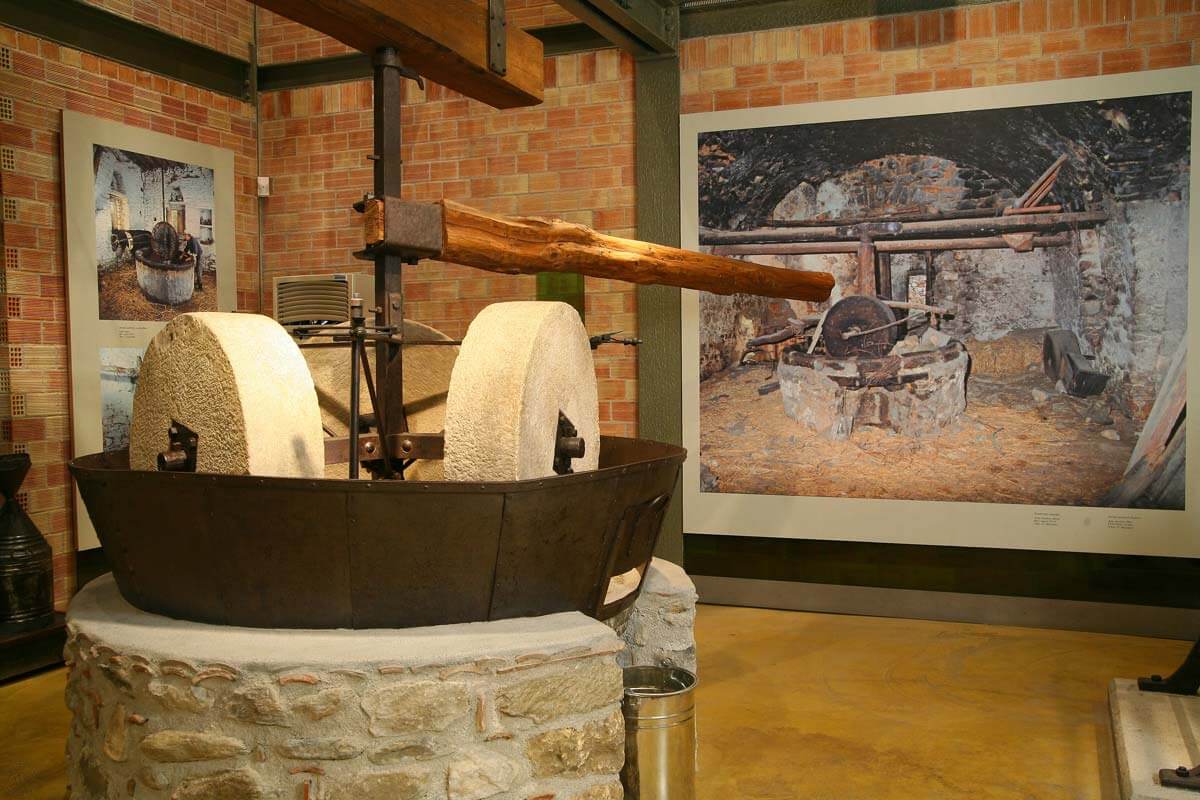
5. The Acropolis of Sparta
The view from the top of the Acropolis is amazing: on one hand is the city of Sparta and on the other the imposing mountain Taygetus. You will find yourself lost in the past admiring the ancient theater, a sight that leaves you with a sense of presence and connection with the ancient Spartan society. Continuing, on the edge of the city, is the Sanctuary of Artemis Orthia, one of the most important sanctuaries of ancient Sparta, which is built near the banks of the river Evrotas. It was the religious center of the famous Spartan education.
![Credit: George E. Koronaios [CC0] The ruins of the ancient theatre of Sparta](https://greektraveltellers.com/images/Blog/Sparta%20things%20to%20do/Runis_of_Ancient_Theater_of_Sparta.jpg)
The above suggestions are the top things to do and not to miss in Sparta. But modern Sparta is more than its historical past and to make your experience complete, there are many more things to do and see.
6. The modern city of Sparta
The main square is a meeting point for residents and visitors and should be your starting point as well. In the morning, students and locals take walks, shop in the surrounding shops, drink their coffee or eat their lunch, or go to work, while at night the square has several options for drinks, cocktails and delicious food that will amaze you! Stroll around the alleys of the city and breath in the local vibes of this modern, fast-paced city.

7. Τhe extraordinary Mystras
Located just 5km away from Sparta’s city center, you will find Mystras, a UNESCO World Heritage Site. It is a must-visit and among the top things to do and see when visiting Sparta. Mystras, the ‘wonder of the Morea’, was a settlement built like an amphitheater on the hill, forging a fortress. You can enjoy a walk in the ruins of this medieval village, passing through the cobbled alleys with the fragrant gardens, the Byzantine churches, the Roman baths, and the stone fountains. If you visit during Spring, you can attend carnival events, such as the Crokee Carnival, and taste fasting food in the village of Mystras, accompanied by a bonfire and the flying of kites and balloons! From the 26th of August to the 2nd of September, a trade fair takes place in the settlement of Mystras, where visitors can buy traditional products, delicacies and clothes from Greek handicrafts at affordable prices.
8. Taygetus Mountain
Time to get away from the city and explore the surrounding nature of Sparta and of course the mountain of Taygetus. Walk the idyllic paths of Taygetus, discover villages hidden behind dense forests and try local cuisine in taverns and restaurants. Some of the highlights of the South Taygetus is its fantastic gorge, which is part of the Natura 2000 network, the wonderful villages of Arna, Koumousta and Xirokambi, the only bridge of antiquity that has survived to this day, and the famous Monastery of Gola, with its frescoes of ancient Greek philosophers. North Taygetus is quite uncharted. It consists of the wilder part, with the beautiful valley of Kastora, the homonymous river and its impressive bridge, the villages of Kastori, Pellana, Georgitsi and Loganiko, and the Palace of Menelaus and Helen of Troy.
Other tips and things to do in Sparta
For the mountain: Visit the Magganiari Spring and take time to enjoy this little wonder of nature.
For the city: On Saturdays, the public market of the city is a pole of attraction and one of the best sources to buy organic vegetables and herbs from the Taygetus and Parnonas mountains. During summer, the Cultural Summer festival, organized at the Sainopouleio Amphitheater, gives you the opportunity to watch a show, a play, or a concert during your stay in the city.
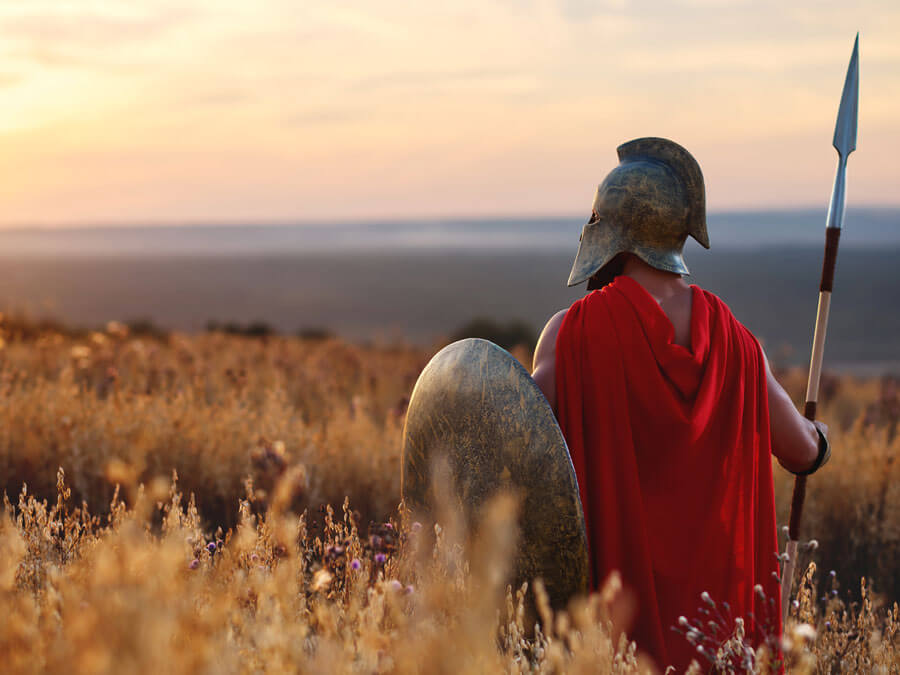
Related Tour
300: the Tour
You may also like:
- 300: Movie Vs. Reality
- Top 10 Alternative Destinations in Greece
About the author: Our team at Greek TravelTellers consists of academics and lovers of Greek culture. Our vision is to convey our knowledge and Greek values through unique tours and experiences. Through our blog, we hope to bring Greek history and culture closer to you. Feel free to learn more about us .
Other articles you may like...
Plan Your Trip to Sparta: Best of Sparta Tourism

Explore Sparta

Explore our great value fares
Essential sparta.

Sparta Is Great For

Art & history

Eat & drink

Climatic Data
Source: National Observatory of Athens / meteo.gr
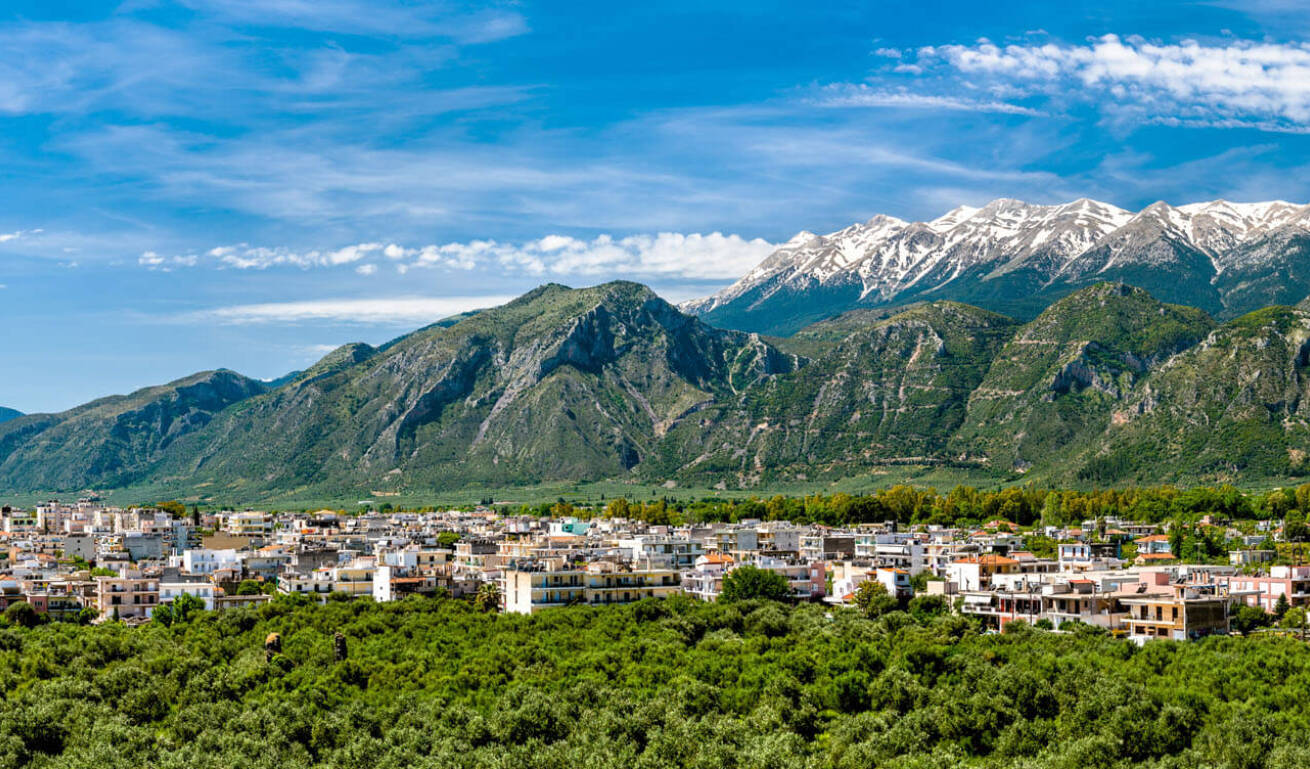
Unique Experiences
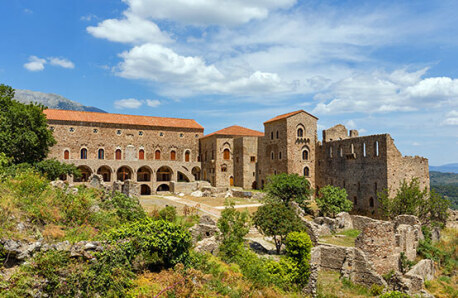
This is Sparta
Excursions around sparta.
Visit the mystical tower town of Mystras, located olny six klm NW of Sparta, and let yourself be captivated by this destination’s medieval splendour. Wander around the castle city and sense through the silence the city's sheer grandeur: the Palace of the Despots (Anaktora), the Houses of Laskaris and Frangopoulos, the beautiful Cathedral of Saint Dimitrios and the impressive Monasteries of Our Lady Pantánassa, and of Οur Lady Perivleptos. Take the opportunity to explore the breathtaking tower town of Monamvasia , this mystical stone-built settlement, nestled at the edge of a big rock by the sea, and immerse yourself in a unique medieval atmosphere! Peer into the history of the fortress –the so-called “Gibraltar of the East” –, which was occupied by the Byzantines, the Crusaders, the Venetians, and the Ottomans in the past.
The caves of Diros
Latest events.
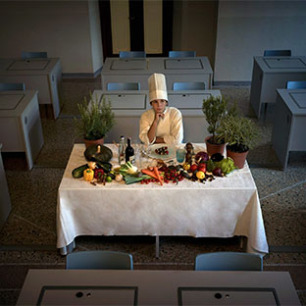
Get Inspired
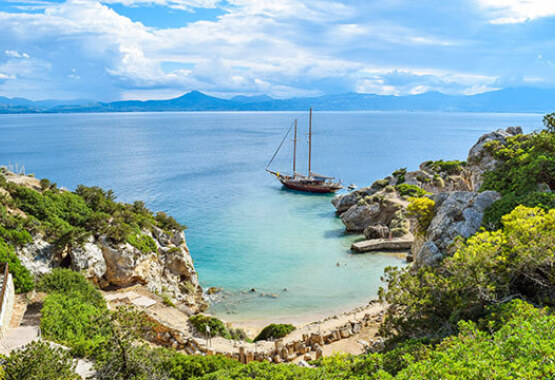
Top 10 Hidden Gems of the Peloponnese
The Peloponnese is a region rich in history, culture, and natural beauty, yet some of its most captivating sites remain hidden from the mainstream tourist radar. However, there are also many hidden gems tucked away in this picturesque region that are off the beaten path and waiting to be explored.
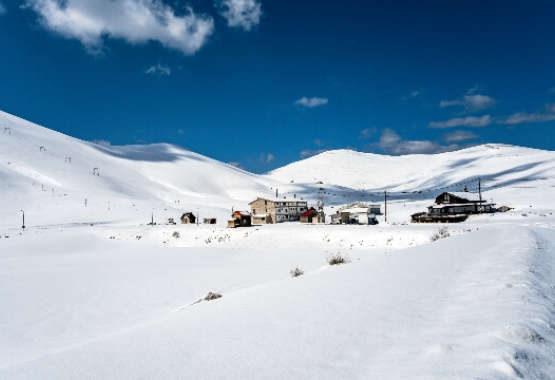
Winter Vacation in Greece
Greece is so much more than just a summertime destination! Choose Greece for your winter holidays and enjoy the possibilities that open up before you!

Top gorges in Greece
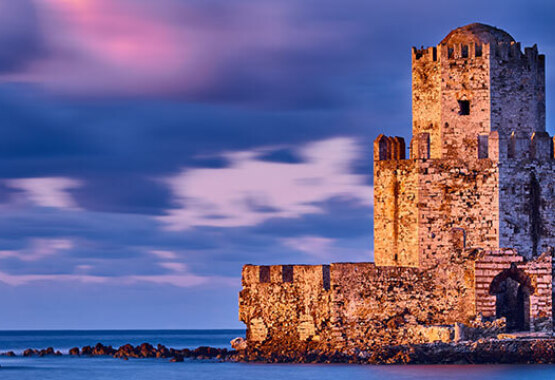

UNESCO Monuments in the Peloponnese
Significant monuments such as archaeological sites, Byzantine churches and impressive castles, dating to various historical periods, make the Peloponnese the ideal place for the visitor...
Other destinations
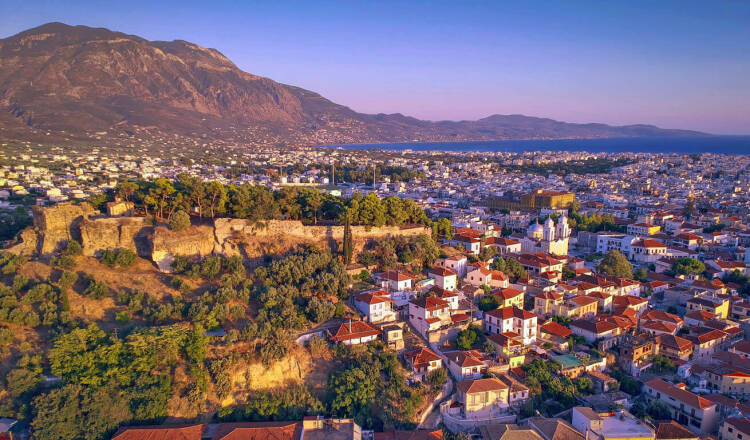

10 Best & Fun Things to do in Sparta, Greece [2023 Guide]
The ancient city of Sparta is located in the southeastern part of Greece together with other historic cities like Argos .
It was founded by Spartans who were fleeing from their home, Laconia. To this day, Spartan culture holds many rituals and traditions that are still followed today.
It’s a small town that has been inhabited for over 2,500 years . The culture, the architecture, the food are all so distinctly Greek, and yet there is something about Sparta that sets it apart from other towns.
Maybe it’s the fact that they have their own dialect of Greek or maybe it’s because when you visit Sparta, you feel like you’re stepping back in time to ancient Greece.
Whatever it may be, one thing is certain, if you love history and want to experience true Greek culture then make sure to include some of the best things we’ve found to see in Sparta!
10. Temple of Artemis Orthia

The temple of Artemis Orthia is an important religious and archaeological site of the Spartans, located near the Evrotas River banks.
The Spartans worshipped Orthia, the goddess of fertility and salvation, and the young Spartans were educated here in the Temple of Artemis Orthia .
Dating back to the 6th Century, here in this temple, you’ll find exquisite archaeological finds. It includes votives, Roman structure, clay masks, and the shrine of Orthias, and ritual accessories.
This landmark is a treat for history and geology fanatics and art enthusiasts. The surrounding green forests and ancient ruins of the altar make for an important historical site.
9. Manousakeion Museum
Museums and archaeological sites offer a unique retrospect of the people and culture of a region. For which reason, the Manousakeion Museum is one among the must-visit landmarks to understand Spartan Culture.
Manousakeio Museum is a 20th Century Museum built in a neoclassical style two-story building. Much of its collection and artifacts represent the rural and urban lifestyle and culture of the Spartans.
A significant portion of the collection in the Museum houses a comprehensive collection of the things from the house and belongings donated by the late King, Leonidas Manousakis. You’ll get to see a wide range of glassware, types of furniture, photographs, embroidery works, and costumes from that era.
8. Ancient Theatre

Standing close to the statue of Leonidas, the Acropolis and Ancient Theatre is an ancient ruin of a theatre that is worth visiting.
The Acropolis and Ancient Theatre dated back to the 2nd Century B.C. and initially held the title for one of the biggest theatres in Greece.
Although well maintained, parts of the 16000 seating capacity Theatre have seen ruins and dismantling.
Tourist suggests that the best time to visit this ancient ruin is during the evening time. You’ll get the most stunning view of the 6 surrounding Taygetus Mountains while catching a glimpse of the golden sunset.
7. Sainopouleio Sparta Theatre
The Sainopouleio Sparta Theatre is located in a small district called Magoula, part of the modern Sparta city in Laconia.
Sainopouleio Sparta Theatre/ Sainopouleio Amphitheatre is one of the most beautiful theaters in Greece . It is easy to locate and visit this Amphitheatre as it is situated on the National highway of Sparta-Kalamata.
This Amphitheatre is home to host the annual “Summer Culture” of Sparta. With a seating capacity of over 1500 audiences and modern facilities, it is ideal for hosting numerous other musical and theatrical events.
The Summer Cultural festival featuring creative and entertaining theatrical, cultural and musical performances is something you shouldn’t miss if you are visiting during the summer months.
6. Taygetus Mountains

Towards the southern Peloponnese lies one of the Greek’s highest mountains called the Taygetus Mountains.
The Taygetus is a scenic mountain range covered in a thick forest that stands at the height of about 2404 meters.
The trek to the top isn’t for the faint-hearted. Nevertheless, the adventurous climb up there accompanied by the picturesque natural landscape and beauty of the mountains makes it a place worth visiting.
Along the trek, you’ll be treated to some gorgeous views, gorges, wild nature, gorgeous butterflies, and if you are lucky, you’ll get to hear some sweet birds singing.
Up to a specific part of the trek, you can ride a bike up there too.
Sparta has so many history-rich archaeological sites to offer, and Menelaion is one of the exceptional ones. The reason being, Menelaion houses archaeological remains from other centuries too.
It is located on a hill called Elias, parallel to the Evrotas Rives and just about 5 km away from the modern city of Sparta.
Along with the rich archaeological findings and history of Menelaion, the geographical location and structure make it truly stand out.
The whole area is lined with green pine and olive trees, and atop the hill, it gives a panoramic and majestic view of the entire valley – ideal for family-oriented outings.
4. Archaeological Museum of Sparta

The Archaeological Museum of Sparta screams history in every aspect. It is the oldest existing provincial Archaeological Museum of Sparta that was completed in 1876.
This neo-classical style architecture Archaeological Museum houses a rich collection of artifacts related to Sparta’s art, culture, and history.
It is easy to locate the Museum as it is close to the city’s central area. The display of items, artifacts, and monuments is organized in chronological order, making it an effortless museum tour.
History enthusiasts and art fanatics are sure to be entertained, and it can be a great source of invaluable information.
3. Museum of the Olive and Greek Olive Oil
One unique identity that instantly associates us with the Greeks is their excellent Olives and Olive Oil. Your whole trip to Greece will be incomplete if you skip visiting the Olive and Greek Olive oil Museum.
Located in Peloponnese, Sparta, this Museum’s primary aim is to allow a window and a chance to explore the culture, history behind the olives, and the processes involved in its production.
This Olive Museum makes for a fun and entertaining activity and learning session for children, adults and elders.
It houses and guides you through many historical facts and information, photographs, graphics, rare fossilized olive leaves, etc.
More info: www.piop.gr/en/diktuo-mouseiwn/Mouseio-Elias-Kai-Ellinikou-Ladiou/to-mouseio.aspx

Mystras/Mistras is a relic townscape of a former municipality of Laconia (13th Century) in Greece.
The archaeological site of Mystras has now been marked under the World Heritage Site. Mystras is one such monumental site of Spartan that you cannot afford to miss.
Since it is located on Mt. Taygetos, you’ll need to trek a little to reach the castle. Taking younger kids may not be advisable, although older children will be manageable.
At the site, you’ll get to witness the ruined castle, chapels and ancient churches. The surrounding view from up there makes the trek all the more worthwhile.
1. Statue of Leonidas
Leonidas meaning “son of the lion,” was an heir to the 17th Agiad line and was a King of Spartan, a Greek City.
Leonidas’s great might, strength, and endurance to fight until his last breath is considered the warrior King of the State of Sparta.
Sparta became a world history state denoting heroism, legendary disciple, and military might; it was notable for the erection of the statue of Leonidas in Sparta.
The Statue of Leonidas is made of Parian marble housed as part of the collection at the Archaeological Museum of Sparta. You can admire and take a photograph of the beauty and artisanship of the statue, which ranks #1 of the things to do in Sparta.
Related posts:

Subscribe to our weekly newsletter and discover new destinations for your next holiday.
Privacy Overview
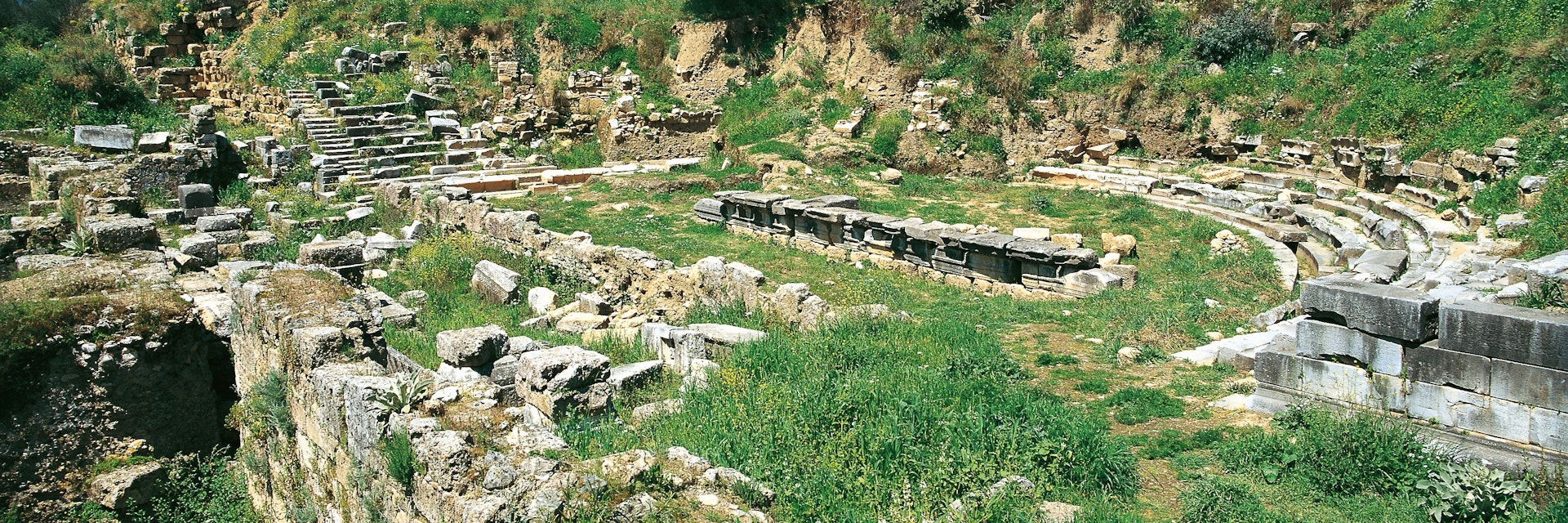
De Agostini/Getty Images
Ancient Sparta
Though few buildings are standing that date back to the height of Sparta's greatness, it's an atmospheric stroll around this hillside, where the acropolis and agora made up the religious and administrative centre (8th century BC until the Roman period). There's an ancient theatre , Sanctuary of Athena Halkioitou , stoas , the ' round building ' and remains of later Byzantine churches. There are good information panels.
On the north side of the town of Sparta are remains of the Sanctuary of Artemis Orthia.
To get here, head to the King Leonidas statue that belligerently hefts its sword and shield at the northern end of Paleologou. West of here, signs point the way to the ancient site.
From the main cobbled road, signed paths head through olive groves. Near the entrance, the round building dates back to Sparta's apogee and may have contained statues of Zeus and Aphrodite. Take the left fork from here to reach the ancient theatre (1st century BC), a few steps and seats of which are still visible along the overgrown half-circle.
The right hand fork heads north to the acropolis, passing the ruins of part of the agora and the Byzantine Church of St Nikon on the way to the anctuary of Athena Chalkioikos (600 BC) on a small hillock. Some of the most important finds in the town’s archaeological museum were unearthed here. You can also climb to here through the theatre to make a circuit.
If you follow the Tripoli-bound road north of town, a signposted path leads downhill to the remains of the Sanctuary of Artemis Orthia ; this is where Spartan boys were flogged till they bled, the bravest awarded bronze sickles which they dedicated to the goddess.
Get In Touch
27310 28575
http://odysseus.culture.gr/
Lonely Planet's must-see attractions
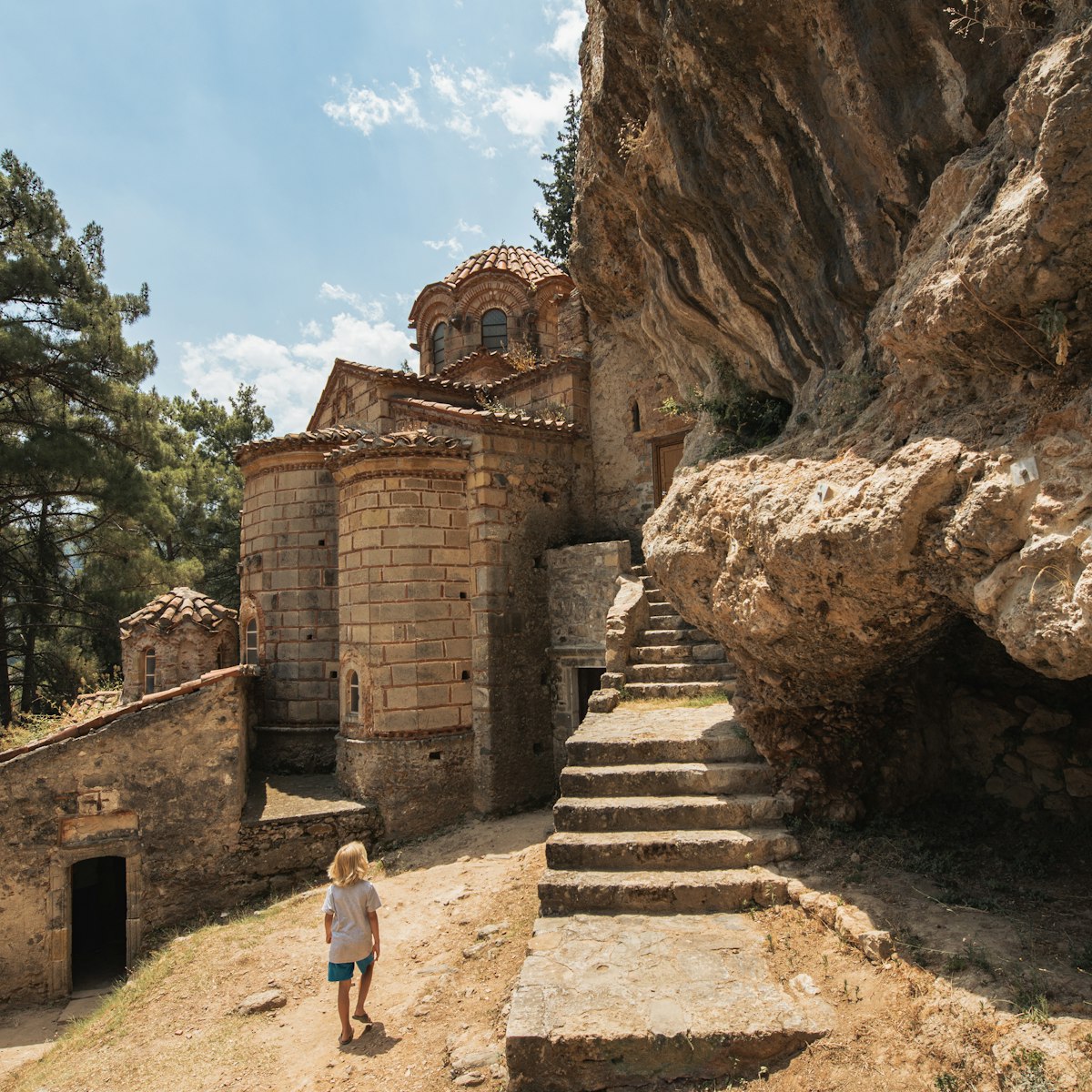
Spread over a steep mountainside and surrounded by verdant olive and orange trees, this former Byzantine capital and fortified city is the single most…
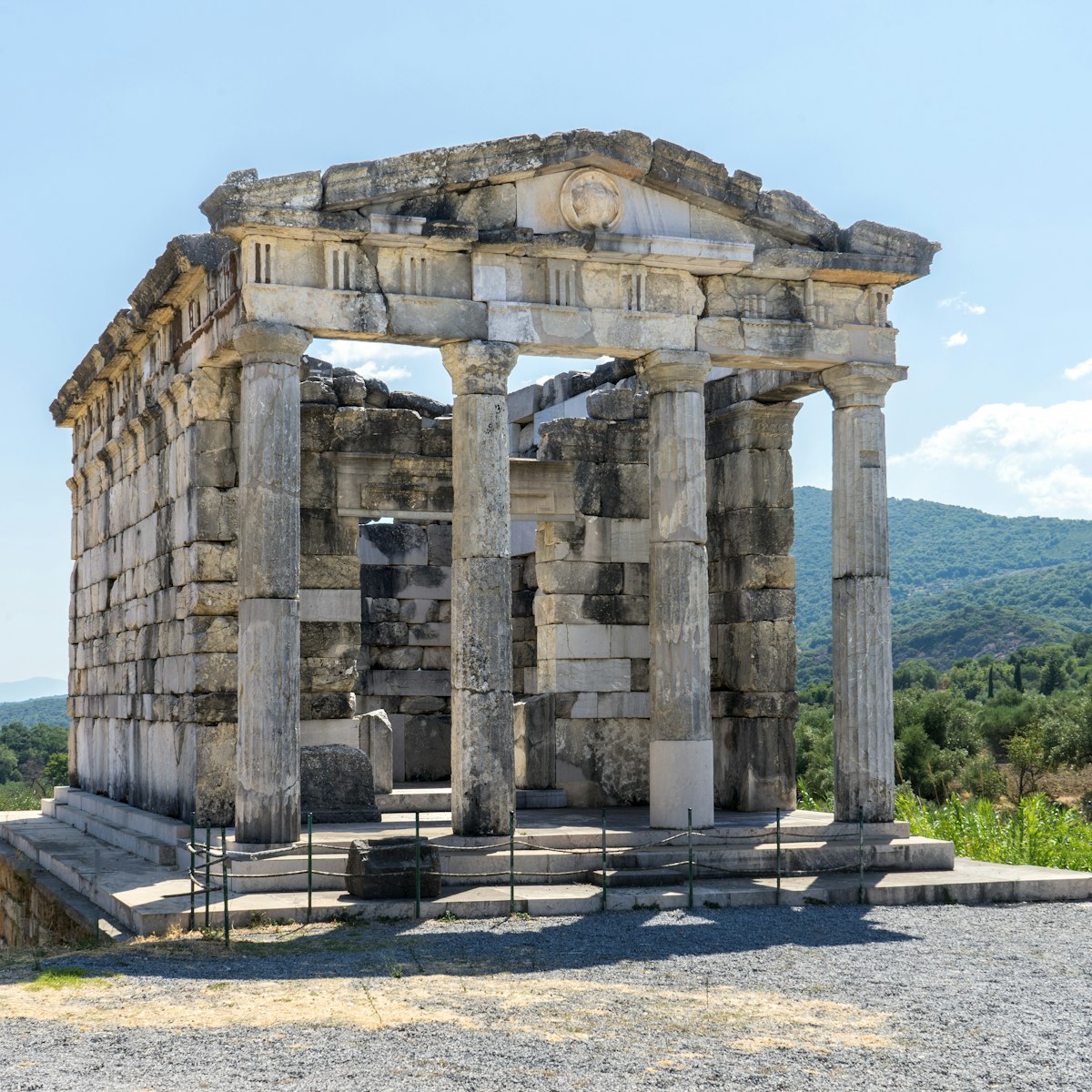
Ancient Messini
28.78 MILES
The remains of this vast ancient city are as extensive as those of Olympia and Epidavros, yet Ancient Messini receives only a fraction of their visitors…

Museum of the Olive & Greek Olive Oil
This beautifully designed museum initiates you into the mysteries of the olive from its initial appearance in the Mediterranean in 60,000 BC to the…

Archaeological Museum of Messenia
17.55 MILES
This partially interactive, child-friendly museum focuses on treasures found in four regions – Kalamata, Pylia, Messini and Trifylia. Exhibits include…
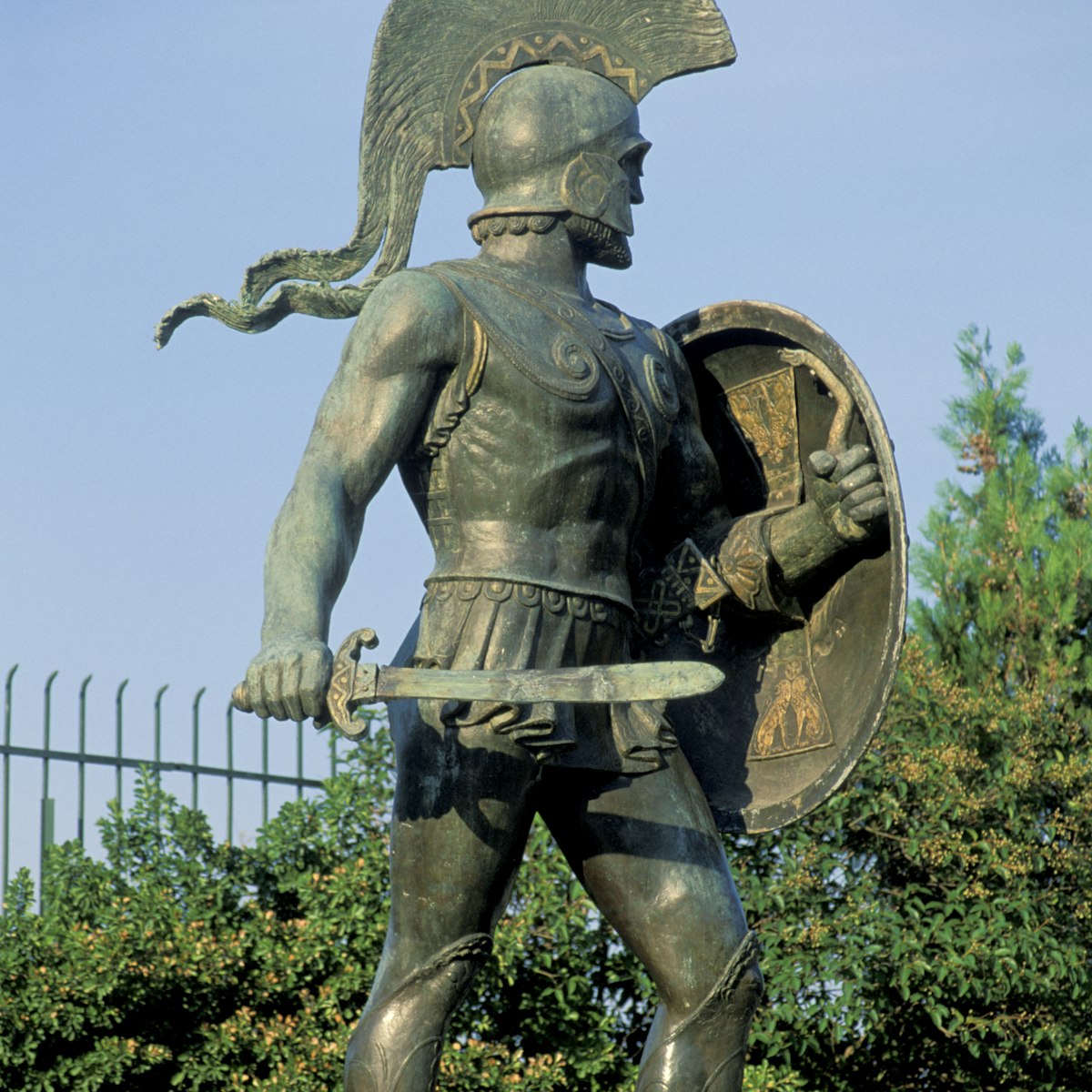
King Leonidas Statue
The King Leonidas statue stands belligerently in front of a football stadium. When the Persians attacked at Thermopylae and told the Spartans and their…

Patrick Leigh Fermor House
17.31 MILES
Larger-than-life Patrick Leigh Fermor (1915–2011), a Hellenophile and marvellously engaging writer, lived just outside Kardamyli for much of his later…

Archaeological Museum
In a park, this likeable old-style archaeological museum hosts artefacts from Sparta’s illustrious past. Look for the votive sickles of the kind that…

17.34 MILES
Looming over the town is the 13th-century kastro (fort). Remarkably, it survived the powerful 1986 earthquake that levelled the city. The entry gate is…
Nearby Sparta attractions
1 . King Leonidas Statue
2 . Koumantarios Gallery of Sparta
Part of the National Art Gallery, the quaint Koumantarios holds a rotating permanent collection plus wonderful temporary exhibitions. It's definitely…
3 . Archaeological Museum
4 . Museum of the Olive & Greek Olive Oil
5 . Mystras
6 . Old Town Kardamyli
16.89 MILES
Old Town Kardamyli consists of a fortified settlement with a handsome 18th-century church, plus restored tower, oil press and three-storey building. There…
7 . Patrick Leigh Fermor House

About Sparta, Greece , Greek Travel Guide
What to do in sparta, greece.
Written by Greek Boston in About Sparta, Greece , Greek Travel Guide Comments Off on What to Do in Sparta, Greece
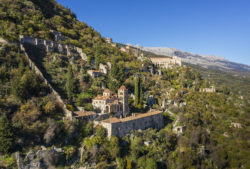
Archaeological Museum
Built in 1873, this museum preserves Spartan history across many eras. Explore prehistoric fragments from around Arcadia and Laconia. A stele from the 6th century BC features Homeric heroes Menelaos and Helen of Troy on one side, Agamemnon and Clytemnestra on the other. Exquisite 7th century amphorae and religious mosaics shed light on ancient Greek society.
Perhaps the most famous collection displays pieces of the Temple of Artemis. This museum contains the actual building blocks of Spartan civilization–clay, ivory, stone–and the evidence of a vibrant spiritual culture.
Museum of Olive Oil
It’s hard to overstate the significance of the olive to Mediterranean culture. Olive trees have flourished in Greece since prehistoric times. The Museum of Olive Oil in Laconia tells the story of an extraordinary fruit. On the ground floor, visitors learn about different methods of creating olive oil that evolved over the centuries. Further up, you discover the many roles of the olive in Greek life, from cuisine to hygiene to symbolic art. The museum was founded by Cultural Foundation of Piraeus Bank Group.
Sparti Town
The scenic town of Sparti is nestled in the mountains of eastern Peloponnese. As the capital of Laconia, it has attractive buildings, parks, and other areas for tourists to peruse. Unlike many towns in Greece, Sparti was designed by a plan. Its broad streets and city squares are ideal for an afternoon stroll. The town was built in the 1830s on the site of Sparta, the ancient city-state remembered for its dominant army. Visitors can see remnants of Sparta, like the monument of Leonidas, nearby.
For decades, Mystras was the height of Byzantine power in Greece. Height is the key word; this breathtaking archaeological site sits high on the slopes of Mt. Taygetos. The fortified town protects the Palace of the Despots, where a despot–a son of the current Byzantine emperor–once reigned. Mystras was a cultural and political hub that absorbed many influences. Its architecture stands as an example of the late Byzantine era. The churches are particularly magnificent. Further down the mountain, there is a village and hiking trails.
You may have seen the movies, but there’s a lot you don’t know about Sparta. The trail of Spartan art and artifacts leads all the way back to prehistory. But you don’t need to be a history buff to appreciate Sparta. These four unforgettable museums and locations can capture anyone’s interest. From steam-powered olive oil presses to frescoed churches, Sparta is full of wonders.
Categorized in: About Sparta, Greece , Greek Travel Guide
This post was written by Greek Boston
Share this Greek Travel Article:
Related Content You May Also Like In Traveling To Greece...
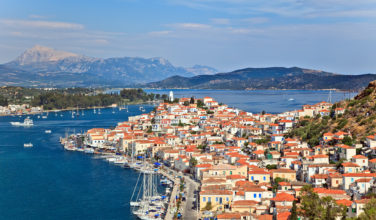
Beaches to Visit in Poros, Greece
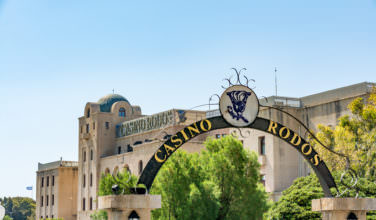
What to Know About the Casino of Rhodes
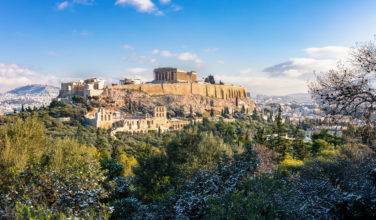
Visit the Tower of the Winds in Athens
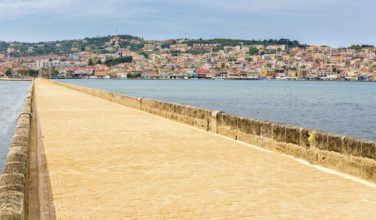
Best Things to Do in Argostoli, Kefalonia
Spárti (Sparta) and around
Book your individual trip , stress-free with local travel experts
Select Month
- roughguides.com
- the-peloponnese
- sparti-sparta-and-around
- Travel guide
- Itineraries
- Local Experts
- Travel Advice
- Accommodation
Plan your tailor-made trip with a local expert
Book securely with money-back guarantee
Travel stress-free with local assistance and 24/7 support
The tour to Greece was a pleasant surprise for me! Perfect organisation, pleasant team, amazing landscapes and cultural sites!
The central core of the Peloponnese is the luxuriantly spreading Mount Ménalo; but due south, in the Lakonian Evrótas valley, are Spárti and its Byzantine companion, Mystra, both overlooked and sheltered from the west by the massive and astonishing wall of the Taïyetos mountain ridge. Spárti had a big role in the development of ancient Greece, while Mystra, arrayed in splendour on its own hillside, is one of the country’s most compelling historical sites.
A Spartan upbringing
Travel ideas for greece, created by local experts.

10 days / from 2681 USD
The Historical and Mythological Cyclades islands
The Cyclades islands include two of the most famous Greek Islands: Mykonos and Santorini. Visit these and some of the smaller, quieter, islands. With white washed houses, narrow cobbled streets, blue domed roofs and stunning beaches, they are what Greece is all about.

9 days / from 2267 USD
A secluded villa stay on Mainland Greece
Stay in a secluded private villa with magnificent views to the sea and explore this beautiful corner of Mainland Greece with your own rental car. Under the impressive Mt Taygetos in Southern Peloponnese, the region of Mani will give you a snapshot of authentic Greece.

10 days / from 2049 USD
Along the Coast of Crete: from Heraklion to Platanias
As Greece's largest island, Crete's culture and atmosphere is distinctly different from mainland Greece. Thousands of years of unique culture and rich history complement the island's untamed natural beauty. Explore Crete at your own pace with this unique self-drive trip!
As the blood-spattered 2007 film 300 would seem to confirm, the famously tough Spartans can still stir the imagination. In part this stems from their legendary upbringing. Under a system known as the agoge, Spartan boys were rigorously trained by the state to develop physical toughness, loyalty and cunning. Babies judged unlikely to make the grade were left exposed on the slopes of Mount Taïyetos. Other boys were taken from their families at the age of seven to live in barracks. They were habitually underfed, so that they would learn to live off the land. At the age of twelve, they were required to form a sexual bond with a young Spartan soldier, who would act as their mentor. At eighteen, they would become provisional members of the army until the age of thirty, when it would finally be decided if they were worthy of Spartan citizenship. At this point they were expected to marry and produce offspring. The system was much admired in the ancient world, and boys from other city-states were sometimes sent here for their education.
Despite lying on the site of the ancient city-state of Sparta, modern SPÁRTI, capital of Lakónia, has few ancient ruins, and is today merely the organizational centre of a huge agricultural plain. Spárti’s limited appeal is its very ordinariness – its pedestrianized side streets, café-lined squares, orange trees and evening vólta. The reason for coming here is basically to see Mystra, the Byzantine town, 5km to the west, which once controlled great swaths of the medieval world.
Brief history
Commanding the Lakonian plain and fertile Evrótas valley from a series of low hills just west of the river, ancient Sparta was at the height of its power from the eighth to the fourth century BC, a period when its society was structured according to extremely harsh laws (see A Spartan upbringing). The ancient “capital” occupied more or less the site of today’s town, though it was in fact less a city than a grouping of villages. Lykurgos, architect of the warlike Spartan constitution and society, declared that “it is men not walls that make a city”.
The Spartans famously defeated Athens in the Peloponnesian War between 431 and 421 BC and later established colonies around the Greek world. They eventually lost hegemony through defeat to Thebes. A second period of prosperity came under the Romans – for whom this was an outpost in the south of Greece, with the Máni never properly subdued. However, from the third century AD, Sparta declined, as nearby Mystra became the focus of Byzantine interest.
The annual September Spartathlon, a 246km run from Athens to Spárti, commemorates the messenger Pheidippides who ran the same route in 490 BC: the current course record is 20 hours and 25 minutes.
Ancient sites
There are a few ruins to be seen to the north of the city. From the bold Statue of Leonidas, hero of Thermopylae, at the top of Paleológou, follow the track around and behind the modern stadium towards the old Acropolis, tallest of the Spartan hills. An immense theatre here, built into the side of the hill, can be quite clearly traced, even though today most of its masonry has gone – hurriedly adapted for fortification when the Spartans’ power declined and, later still, recycled for the building of Byzantine Mystra. Above the theatre a sign marks a fragment of the Temple of Athina Halkiakou, while at the top of the acropolis sit the knee-high ruins of the tenth-century Byzantine church and monastery of Ósios Níkon.
Out on the Trípoli road (Odhós-ton-118, just past the junction with Orthias Artémidhos), a track leads to the remains of the sanctuary of Artemis Orthia. This was where Spartan boys underwent gruelling tests by flogging. The Roman geographer and travel writer Pausanias records that young men often perished under the lash, adding that the altar had to be splashed with blood before the goddess was satisfied. Being addicts of morbid blood sports, the Romans revived the custom here – the main ruins are of the spectators’ grandstand they built.
The archeological museum
All moveable artefacts and mosaics have been transferred to the town’s small archeological museum on Áyios Níkonos. Among its more interesting exhibits are a number of votive offerings found on the sanctuary site – sickles set in stone that were presented as prizes to the Spartan youths and solemnly rededicated to the goddess – and a fifth-century BC marble bust of a running Spartan hoplite, found on the acropolis and said to be Leonidas. There is a dramatic late sixth-century BC stele, with relief carvings on both sides, possibly of Menelaos with Helen and Agamemnon with Klytemnestra; the ends have carved snakes. There are fragments of Hellenistic and Roman mosaics, and numerous small lead figurines, clay masks and bronze idols from the Artemis Orthia site.
The Museum of the Olive
At the southwest corner of town is the Museum of the Olive and Greek Olive Oil, at Óthonos & Amalías 129, worth a visit for its informative displays covering the primordial history, uses and production technology of the olive.
MYSTRA is one of the most exciting and dramatic historic sites that the Peloponnese can offer – a glorious, airy place, hugging a very steep, 280m foothill of Taïyetos. Winding up the lushly vegetated hillside is a remarkably intact Byzantine town that once sheltered a population of some 20,000, and through which you can now wander. Winding alleys lead through monumental gates, past medieval houses and palaces and above all into the churches, several of which yield superb if faded frescoes. The overall effect is of straying into a massive unearthing of architecture, painting and sculpture – and into a different age with a dramatically different mentality.
In 1249, Guillaume II de Villehardouin, fourth Frankish prince of the Moreas, built a castle here – one of a trio of fortresses (the others at Monemvasiá and the Máni) designed to garrison his domain. The Franks, however, were driven out of Mystra by the Byzantines in 1262, and by the mid-fourteenth century this isolated triangle of land in the southeastern Peloponnese, encompassing the old Spartan territories, became the Despotate of Mystra. This was the last province of the Greek Byzantine empire and, with Constantinople in terminal decay, its virtual capital.
During the next two centuries, Mystra was the focus of a defiant rebirth of Byzantine power before eventual subjugation by the Turks in 1460, seven years after the fall of Constantinople. Mystra remained in Turkish hands until 1687 when it was captured, briefly, by the Venetians. Decline set in with a second stage of Turkish control, from 1715 onwards, culminating in the destruction that accompanied the War of Independence, the site being evacuated after fires in 1770 and 1825. Restoration begun in the first decades of the twentieth century was interrupted by the civil war – during which it was, for a while, a battle site – and renewed in earnest in the 1950s when the last inhabitants were relocated.
The Upper Town and Kástro
The Kástro, reached by a path direct from the upper gate, maintains the Frankish design of its original thirteenth-century construction. There is a walkway around most of the keep, with views of an intricate panorama of the town below. The castle itself was the court of Guillaume II de Villehardouin but in later years was used primarily as a citadel.
Following a course downhill from the Kástro, the first identifiable building you come to is the church of Ayía Sofía (1350). The chapel’s finest feature is its floor, made from polychrome marble. Its frescoes, notably a Pandokrátor (Christ in Majesty) and Nativity of the Virgin, have survived reasonably well, protected until recent years by coatings of whitewash applied by the Turks, who adapted the building as a mosque.
Palatáki and the Despot’s Palace
Heading down from Ayía Sofía, you have a choice of routes. The right fork winds past ruins of a Byzantine mansion, one of the oldest houses on the site, the Palatáki (“Small Palace”; 1250–1300), and Áyios Nikólaos, a large seventeenth-century building decorated with unsophisticated paintings. The left fork is more interesting, passing the fortified Náfplio Gate, which was the principal entrance to the upper town, and the vast, multistoreyed, Gothic-looking complex of the Despots’ Palace (1249–1400; closed at the time of writing, undergoing extensive rebuilding and restoration). Most prominent among its numerous rooms is a great vaulted audience hall, built at right angles to the line of the building; its ostentatious windows regally dominate the skyline, and it was once heated by eight great fireplaces. Flanking one side of a square, used by the Turks as a marketplace, are the remains of a mosque.
The Lower Town
At the Monemvasiá Gate, which links the upper and lower towns, there is a further choice of routes: right to the Pandánassa and Perivléptos monasteries or left to the Vrondohión monastery and cathedral, all very clearly signed. If time is running out, it is easier to head right first, then double back down to the Vrondohión.
Pandánassa convent
When excavations were resumed in 1952, the last thirty or so families who still lived in the lower town were moved out to Néos Mystrás. Only the nuns of the Pandánassa (“Queen of the World”) convent have remained; they have a reception room where they sell their own handicrafts and sometimes offer a cooling vyssinádha (cherryade) to visitors. The convent’s church, built in 1428, is perhaps the finest surviving in Mystra, perfectly proportioned in its blend of Byzantine and Gothic. The frescoes date from various centuries, with some superb fifteenth-century work, including one in the gallery that depicts scenes from the life of Christ. Other frescoes were painted between 1687 and 1715, when Mystra was held by the Venetians.
Perivléptos monastery
The diminutive Perivléptos monastery (1310), a single-domed church, partially carved out of the rock, contains Mystra’s most complete cycle of frescoes, almost all of which date from the fourteenth century. They are in some ways finer than those of the Pandánassa, blending an easy humanism with the spirituality of the Byzantine icon traditions. The position of each figure depended upon its sanctity, and so upon the dome the image of heaven is the Pandokrátor (the all-powerful Christ in glory after the Ascension); on the apse is the Virgin; and the higher expanses of wall portray scenes from the life of Christ. Prophets and saints could only appear on the lower walls, decreasing in importance according to their distance from the sanctuary.
Laskaris House
Along the path leading from Perivléptos to the lower gate are a couple of minor, much-restored churches, and, just above them, the Laskaris House, a mansion thought to have belonged to relatives of the emperors. Like the House of Frangopoulos, it is balconied; its ground floor probably served as stables. Close by, beside the path, is the old Marmara Turkish Fountain.
The Mitrópolis or cathedral, immediately beyond the gateway, is the oldest of Mystra’s churches, built between 1270 and 1292. A marble slab set in its floor is carved with the double-headed eagle of Byzantium, commemorating the 1448 coronation of Constantine XI Paleologos, the last Eastern emperor; he was soon to perish, with his empire, in the Turkish sacking of Constantinople in 1453. A stone with red stains is said to mark where Bishop Ananias Lambadheris was murdered in 1760. Of the church’s frescoes, the earliest, in the northeast aisle, depict the torture and burial of Áyios Dhimítrios, the saint to whom the church is dedicated. Opposite are frescoes illustrating the miracles of Christ and the life of the Virgin; more intimate and lighter of touch, they date from the last great years before Mystra’s fall. Adjacent to the cathedral, a small museum (included in main admission charge) contains various fragments of sculpture and pottery.
Vrondohión monastery
The Vrondohión monastery, a short way uphill, was the centre of cultural and intellectual life in the fifteenth-century town – the cells of the monastery can still be discerned – and was also the burial place of the despots. Of the two attached churches, the further one, Odhiyítria (Afendikó; 1310), has been beautifully restored, revealing startlingly bold, fourteenth-century frescoes similar to those of Perivléptos.
Néos Mystrás
This pleasant roadside community has a small square with several tavernas, crowded with tour buses by day but low-key at night, except at the end of August when the place buzzes with live music during the week-long annual paniyíri (fête).
The Mystra renaissance
Throughout the fourteenth century and the first decades of the fifteenth Mystra was the principal cultural and intellectual centre of the Byzantine world, attracting the finest Byzantine scholars and theologians and sponsoring a renaissance in the arts. Most notable of the court scholars was the humanist philosopher Gemisthus Plethon, who revived and reinterpreted Plato’s ideas, using them to support his own brand of revolutionary teachings, which included the assertions that land should be redistributed among labourers and that reason should be placed on a par with religion. Although his beliefs had limited impact in Mystra itself – whose monks excommunicated him – his followers, who taught in Italy after the fall of Mystra, exercised wide influence in Renaissance Florence and Rome.
More tangibly, Mystra also was home to the final flourish of Byzantine architecture, with the building of a magnificent palace for the despots and a perfect sequence of churches, multi-domed and brilliantly frescoed.
Discover more places in Greece

- Travel Guide Morocco
- Travel Guide Namibia
- Travel Guide South Africa
- Travel Guide China
- Travel Guide India
- Travel Guide Indonesia
- Travel Guide Japan
- Travel Guide Laos
- Travel Guide Malaysia
- Travel Guide Myanmar (Burma)
- Travel Guide Nepal
- Travel Guide Philippines
- Travel Guide Singapore
- Travel Guide South Korea
- Travel Guide Sri Lanka
- Travel Guide Taiwan
- Travel Guide Thailand
- Travel Guide Australia
- Travel Guide Fiji
- Travel Guide New Zealand
- Travel Guide Belize
- Costa Rica Travel Guide
- Travel Guide Cuba
- Travel Guide Guatemala
- Travel Guide Honduras
- Travel Guide Jamaica
- Travel Guide Nicaragua
- Travel Guide Panama
- Travel Guide Puerto Rico
- Travel Guide Trinidad and Tobago
- Travel Guide Albania
- Travel Guide Austria
- Travel Guide Belgium
- Travel Guide Bosnia-Herzegovina
- Travel Guide Bulgaria
- Travel Guide Cyprus
- Travel Guide Czechia (Czech Republic)
- Travel Guide Denmark
- Travel Guide England
- Travel Guide Estonia
- Travel Guide Finland
- Travel Guide France
- Travel Guide Germany
- Travel Guide Greece
- Travel Guide Hungary
- Iceland Travel Guide
The Rough Guides to Greece and related travel guides
In-depth, easy-to-use travel guides filled with expert advice.
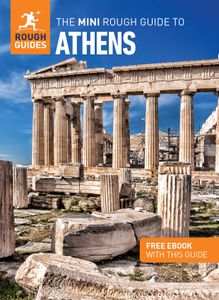
Find even more inspiration here

Planning your own trip? Prepare for your trip
Use Rough Guides' trusted partners for great rates
written by Rough Guides Editors
updated 27.04.2021
Ready to travel and discover Greece?
Get support from our local experts for stress-free planning & worry-free travels.
- Where to stay
- Travel advice
Introduction & General Information

The modern city of Sparti Greece was founded to commemorate the famous ancient town of Sparta. Until the beginning of the 19th century, Sparti was just a small village. However, in 1834, after the War of Independence, King Otto of Greece decreed that the village would be expanded and a new city would be erected at the site of the ancient Sparti. The new city was indeed founded and it had nice architecture, as the architects of the city based on three main axes with boulevards and parks.
In the ancient times, Sparti was a powerful town-state, known for its brave soldiers and tough way of life. The men of ancient Sparta was to create an unbeatable army and to rule over the rest of Greece with their military power. That is why the way of life and all customs in ancient Sparti were oriented to satisfy this vision.
Nowadays, Sparti is the administrative capital of the Greek prefecture of Laconia. It has a population of about 18,000 people and its economy is based on agriculture and secondarily on tourism. The valley of Evrotas provides fertile land for the production of excellent citrus fruits and olive oil, which are the most well-known products of the region.
The center of Sparti is well-divided in three-line boulevards and has nice parks. It offers all the amenities of a bigger city, including shops, hotels, restaurants, and many entertainment options. Moreover, it has many nearby sights to see.
The ruins of the ancient Sparti are about 500m from the town center. There you can admire the monument of Leonidas , the king who held back the Persian army in the battle of Thermopylae along with three hundred brave Spartans. You will also watch the whole town from the above hill and you will find the view really impressing, as Sparti is surrounded by mountains, which made of this place the best location to defend the settlement.
- Architecture
- Local Products
- Useful Phones
- Reviews (3)
- News & Events (3)
PHOTO GALLERY
Discover more about sparti.

- Share this page on Facebook
- Share this page on Twitter
- Copy the URL of this page

Woman&Home
Best places to visit in Greece - the destinations loved by experts, locals and tourists
Posted: June 21, 2023 | Last updated: June 21, 2023
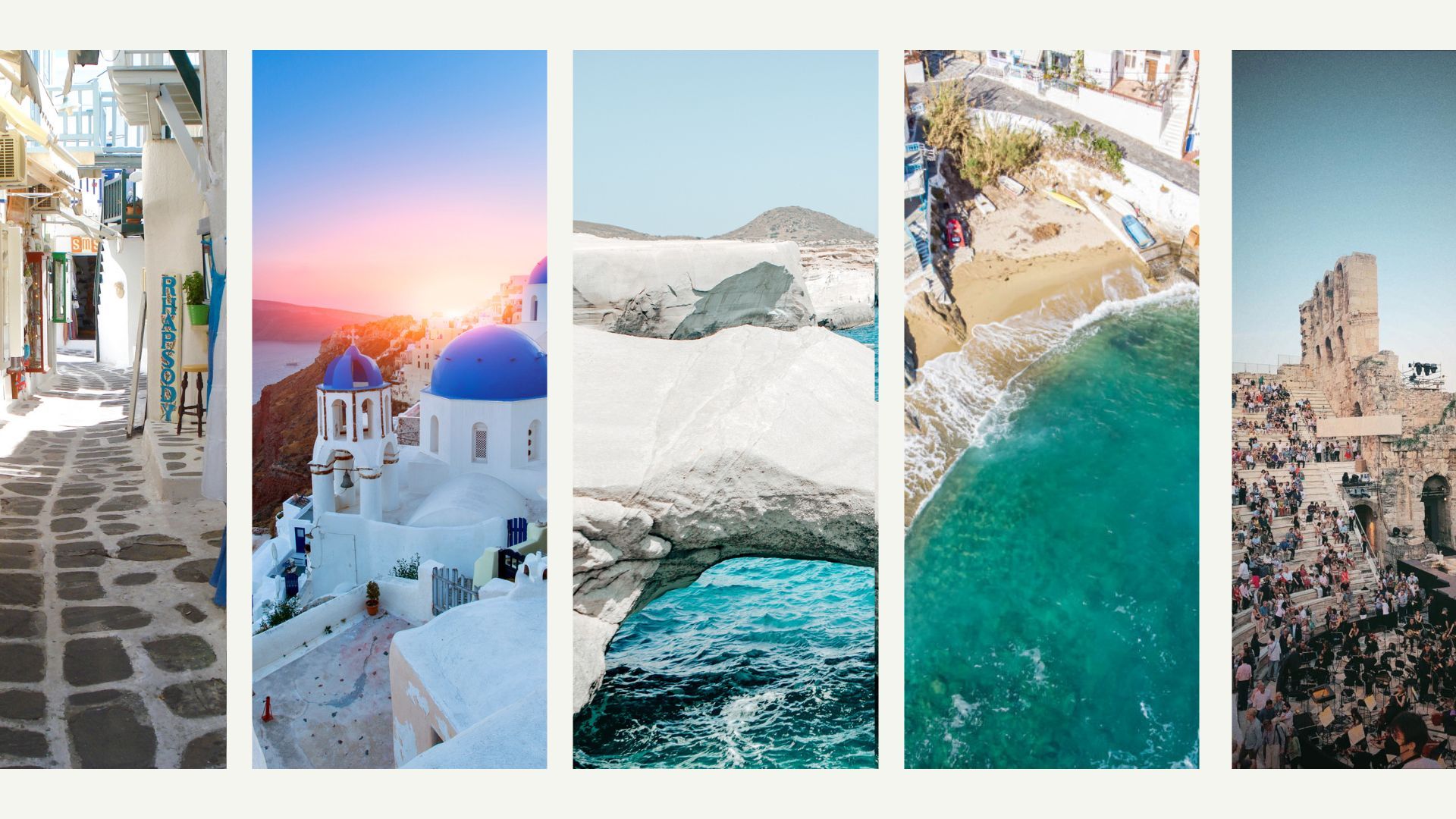
Choosing the best places to visit in Greece is an almost impossible task. Home to hundreds of islands, buzzing metropolitan cities steeped in history and culture, and a coastline that spans almost 16,000km, the country truly has something for everyone.
If you’re looking for one of the best European city breaks, you could start with Athens, the birthplace of Western civilization. Nowadays it’s a city of contrasts where you’ll find archaeological sites nestled next to lively coffee shops, market stalls and cocktail bars. Or you could head to the best Greek islands, all possessing their own unique charm, cuisine, and exquisite scenery. Then there’s everything in-between: the mountainous landscapes, towering cliffs, and endless beaches that you’ll find across the country.
As someone who's traveled around Greece for the last decade, with a short stint of living in it, I like to think I have my finger on the pulse of the best places to visit. But just to be sure, I've also enlisted the help of my Greek friends and family members to cover a mixture of destinations - from some of the best islands in Europe, to accessible areas of the mainland. Whether you’re looking for sun, sea, sand, culture, or a buzzing culinary experience, as one of the best places to visit in Europe, Greece can satiate all these desires.
BY ANNA PAUL

No trip to Greece would be complete without a trip to its capital, Athens. A sprawling, modern metropolis overlooked by the Acropolis, a citadel that's sat on top of a rocky outcrop since 5th century BC. Even if you're not interested in history, it's hard not to marvel at the ancient Greek monumental complex, which can be seen from virtually every corner of the city. In the summer months, you can also attend concerts, opera and theatre performances at Odeon Herodes Atticus, the ancient theatre perched on the Acropolis. It's a true bucket list experience. Once you've scaled the heights of the Acropolis, head down to check out the museum which details the history of the site and the city as a whole.
Next, head down to the heart of Athens, starting with Monisteraki and its buzzing street stalls and tavernas. If you're after street food, head to Kosta's Souvlaki where you can grab a pitta filled with pork, beef or chicken with onion, tomato and Kostas 'secret' tomato sauce. If you want to sit down with the locals for a meal (or just impress your friends with your insider knowledge), head to Avli, a rustic taverna that you can access via an unmarked door at Agiou Dimitriou 12. Once you find the door - which admittedly can be hard - you'll find a lively yard packed with small tables, delicious meals, jugs of local wine and live music.
For fine dining, head to Hytra, a Michelin star restaurant in Koukaki - a creative neighborhood, located in the shadow of the Acropolis. Enjoy the 11-course tasting menu which takes reimagines traditional Greek recipes, re-creating them with freshly sourced raw materials. If the food wasn't enough to convince you, the panoramic view of the Acropolis will be. Head there at sunset for some truly breathtaking views.
Then there are the bars and coffee shops, of which Athens has many. Go to Minu in Psyrri, a minimalistic haven where you can buy mood-boosting plants and handcrafted homeware, or simply sip your coffee and take in the urban oasis. Stay in Psyrri which is packed with cocktail bars (we recommend Juan Rodriguez but you have plenty to choose from).
Top tip: Download 'Beat' - Greece's answer to Uber. Most of the city's yellow taxis operate with the app but prices are far lower (and language barriers kept to a minimum).
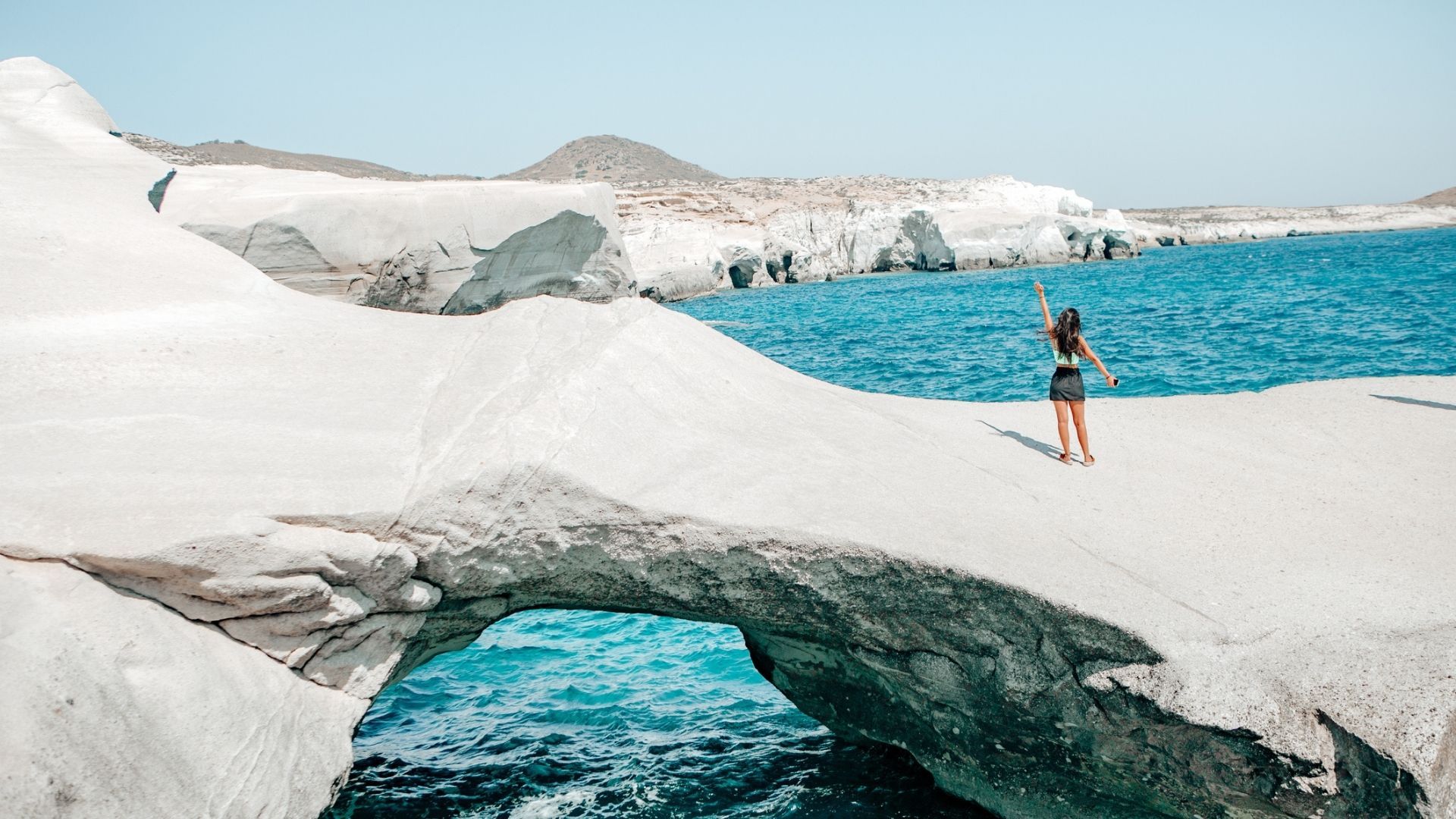
Eschew some of the more popular islands and head to Milos for a truly romantic holiday. Accessible via a short flight from Athens or a ferry ride from the popular islands of Santorini, Paros or and Mykonos, this unique island is worth adding to any travel-hopping itinerary.
The volcanic island in the Aegean sea has been growing in popularity over recent years but it still remains unblemished by swelling tourism. Brimming with beautiful beaches and crystal clear waters, it offers everything you’d expect from a Greek Island. But the truly unique thing about Milos is its spell-binding lunar landscapes. Its chalk-white cliffs overlooking the azure-blue ocean feel (quite literally) other-worldly. Sarakiniko Beach boasts white rock formations which have smoothed and shaped over time, giving you the sensation you’re walking on the moon. For a truly unique experience, head to the beach before 8am and immerse yourself in the vast, chalky landscape. Drink in the view of the white-bone moonscapes, then jump into the azure sea below. The beach doesn’t offer much natural shade so if you want to avoid the hottest time of the day, plan to go to the beach for the sunset. We recommend traveling in May or early June. August is hot - and windy, which makes swimming difficult.
There is no public transport operating to the beach, so think about renting a car, scooter, or ATV. The beach is around 10 minutes from Adamas and Plaka so taxis are also reasonable.
Top tip: There are no restaurants or bars at Sarakiniko beach, so come ready with water and food. It’s not far from nearby towns but you will have to hop in the car to get there. Be braced: there are also no public toilets.

3. Zakynthos
Zakynthos island is known for its wild nightlife, but don't be deterred by its party reputation, as the island offers so much more. Its airport is small but extremely well-served, meaning you can often take advantage of holiday deals on offer.
Once again, renting a car is advisable to really scale the island and experience its breathtaking views in their full glory. But if you can't, consider staying in Zante Town - the island's capital, where the central bus station is located. Full of picturesque Venetian-style houses and buildings, the town is the cultural hub of the island. But to really immerse yourself in the island culture, head to Vasilikos, the village and community which is located around 15 kilometers south of the town. This part of the island is decidedly sleepy, making it one of the best European vacations for families but solo travelers or couples would enjoy it just as much. While away the day on Gerakas Beach, a long, golden beach on the southern tip of the peninsula, home to the famous Loggerhead Turtles who nest in protected areas of the beaches. Banana beach, the biggest beach on the island is also located nearby. A long, wide beach with sparkling and shallow waters, you can also take part in an array of watersports here.
If you have a car, take a 15-minute ride to Porto Mela, a taverna perched on Dafni beach that serves up all the favorites plus a selection of fresh seafood. If you're feeling adventurous, try rabbit in red sauce (kouneli stifado) - one of the island's signature dishes. Like most Greek cuisine, it's delicious, messy, and entirely unpretentious. Most restaurants will have different stifado options with other meats on offer too. Wash it down with a carafe of local wine - the island is home to many large vineyards and it's common for families to produce their own.
Top tip: While the south is rich with nature, beaches, and cuisine, don't leave Zante before visiting the north end of the island where the famous Navagia beach is located. Otherwise known as shipwreck beach, the remains of the MV Panagiotis ship have been planted on the white sand since the ship sunk in 1982. It's accessible only by boat, but avoid booking a boat to specifically go there - instead find an itinerary that includes Navagia beach as part of an island tour. In most cases, you'll pay the same price but see multiple destinations.
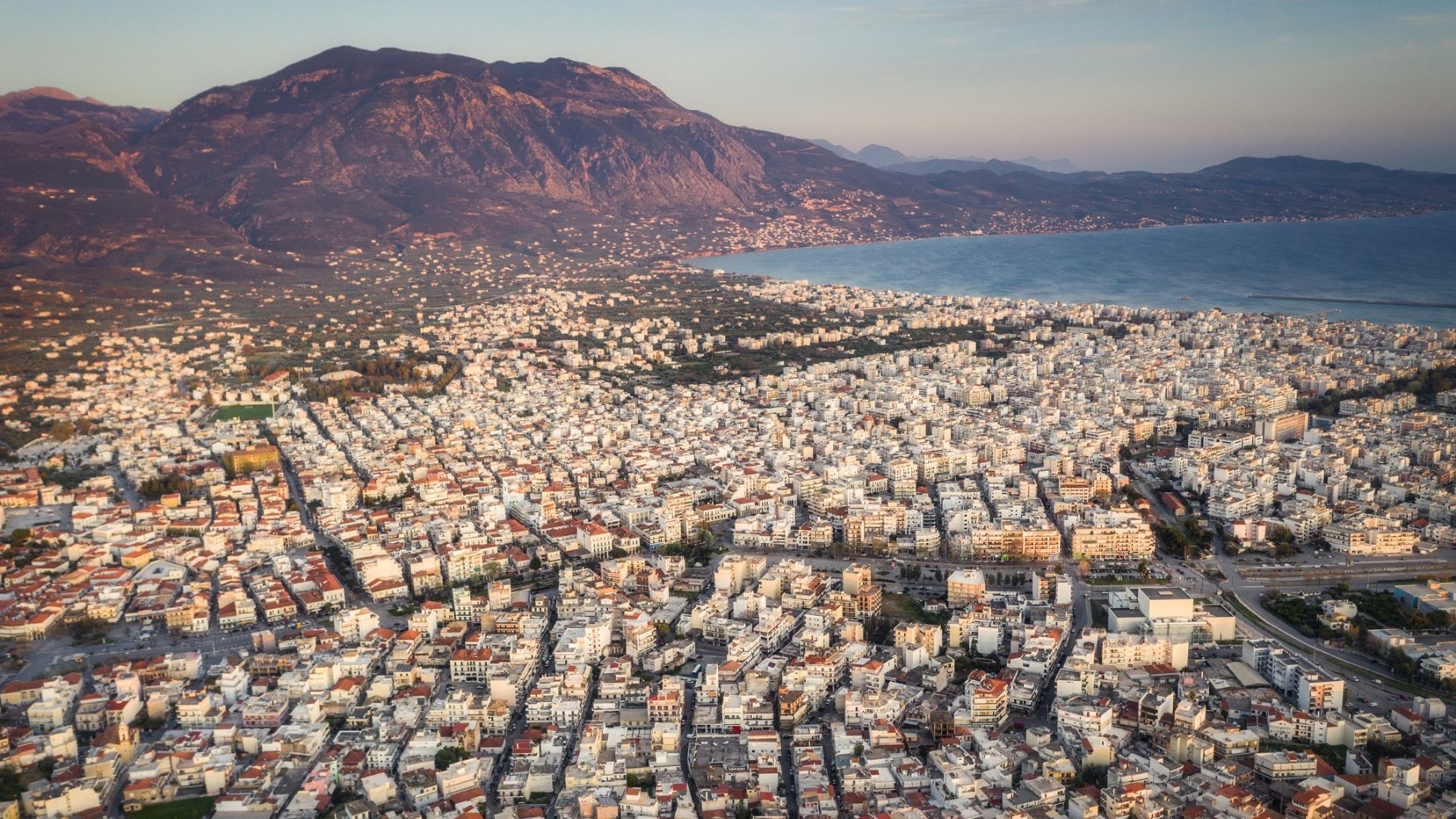
4. Kalamata
You might know the name thanks to Kalamata's famous olives, but the capital of Messinia offers plenty more than just that. A pit stop for some of the best cruises and served by many major airlines, Kalamata is a seriously underrated holiday destination. Located 2.5 hours away from the capital, it's a popular hotspot for Athenians and other Greek tourists but it's still completely unspoiled by the swarms of international tourists. Make no mistake though - this is a city built for tourism, with luxury resorts, fine cuisine, and endless beaches. By summer, the beachfront is the place to be, lined with restaurants and beach bars that stay open until the early hours. In winter, the picturesque old town livens up. You can visit the castle or the archaeological museum but the best thing to do in Kalamata is just to do nothing at all and spend days wandering between beach bars, tavernas and dipping in the crystal blue water. There are endless sandy and pebbled beaches along the coastline which progressively get quieter and quieter as you edge away from the main marina.
You're spoilt for choices when it comes to cuisine, but pay a visit to the taverna of Kosta Vassiliadis (Stou Kosta). Regularly featured in top restaurant guides, everything is local and everything is fresh - from the meat, to fish to the verdant salads. The taverna is relatively hard to find unless you have a GPS but that doesn't deter the crowds: it's always packed - and for a reason. Expect to see Kostas floating from table to table chatting to everyone and introducing the food. As all the best tavernas do, they offer their own twist on the classics. The moussaka here is made with finely sliced veal instead of minced meat, layered on top of sliced aubergines and finished with a bechamel sauce. To sample the best local wares though, let your server choose your dishes for you. It goes without saying, too, that you need to sample the local olives when you're there.
The pace of life is slow in Kalamata but it has a lively nightlife. In the center, enjoy a perfectly mixed cocktail in Luna Loungeor local favorite, Bistroteca. The city can be enjoyed by all ages, making it one of best vacations for over 60s and families alike.
Top tip: Take a day trip to the village of Kardamylli, under one hour away from Kalamata. The sleepy village sits below the Taygetos Mountains so is ripe for hiking, but you'll get equal pleasure just taking in the charm of the settings. The drive through the narrow, sloping mountains is picturesque and relatively short but is admittedly quite terrifying if you're not used to Greek roads. During the summer season, buses run approximately three times a day.
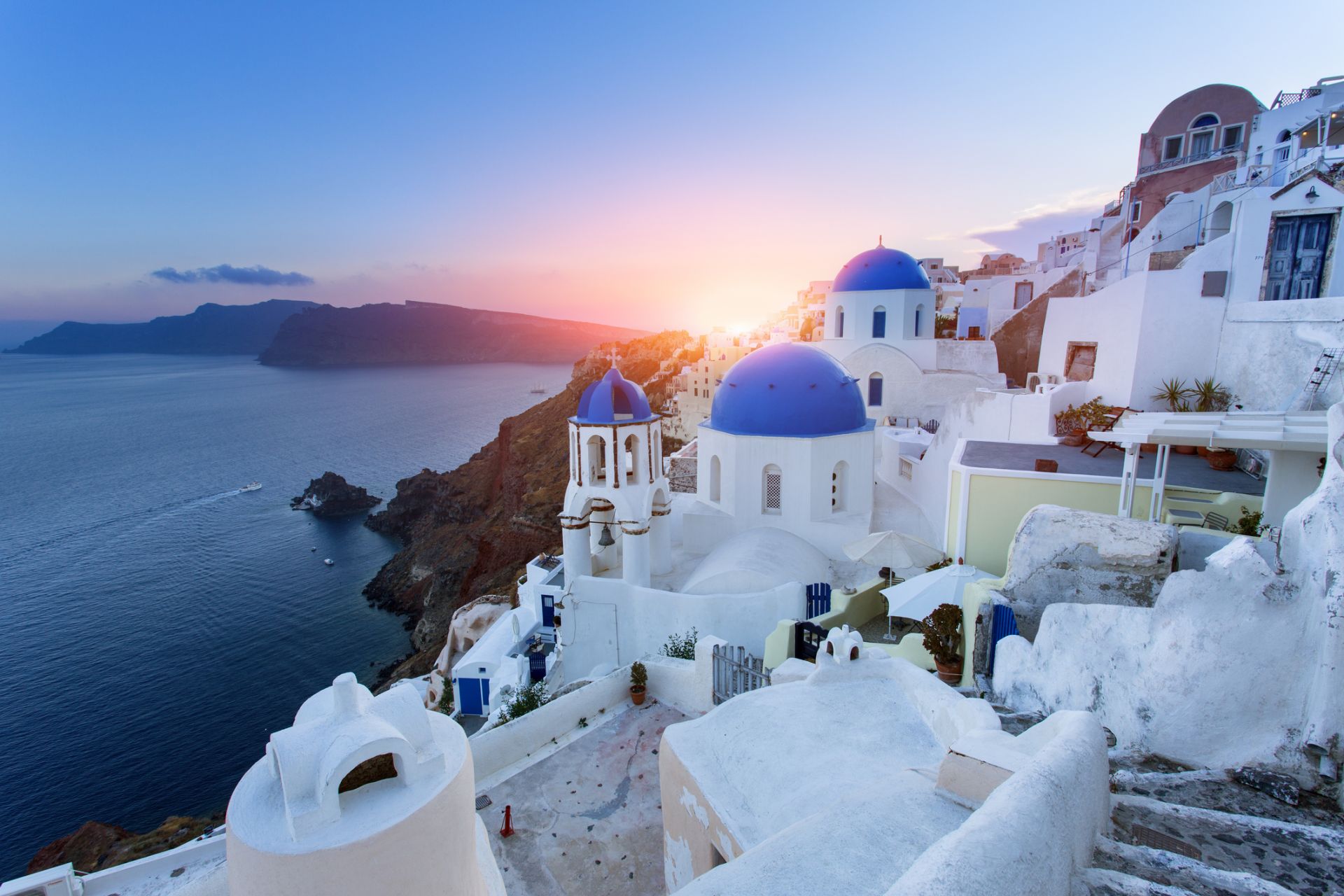
5. Santorini
No list of the best places to visit in Greece would be complete without mentioning Santorini. Probably the most famous Greek island, Santorini is one of the top summer destinations worldwide and home to some of the best luxury hotels in the world. The island gets extremely busy during the peak summer months, making it one of the best places to visit in September or between March and April when it's marginally quieter.
The windswept volcanic island is known for its whitewashed cubiform houses and mesmerizing sunsets. For the best viewpoint, close your day in the picturesque village of Oia. As one of the most photographed islands, you might feel as though you've already seen the Santorini blue domed churches, and volcanic coves - but experiencing it firsthand is an entirely different experience. As with everywhere in Greece, you're spoilt for choice when it comes to food. Try domatokeftedhes - tomato fritters made with sun-blushed Santorini tomatoes. Wash them down with a glass of Assyrtiko wine from one of the island's 20+ wineries. The microclimate of the island provides a fertile environment for the rare, high-acidity grape.
Top tip: Consider finding a private tour guide - not only can they give you insider tips but they can help you navigate the island's winding vistas. More crucially, they'll know the best routes to avoid crowds.
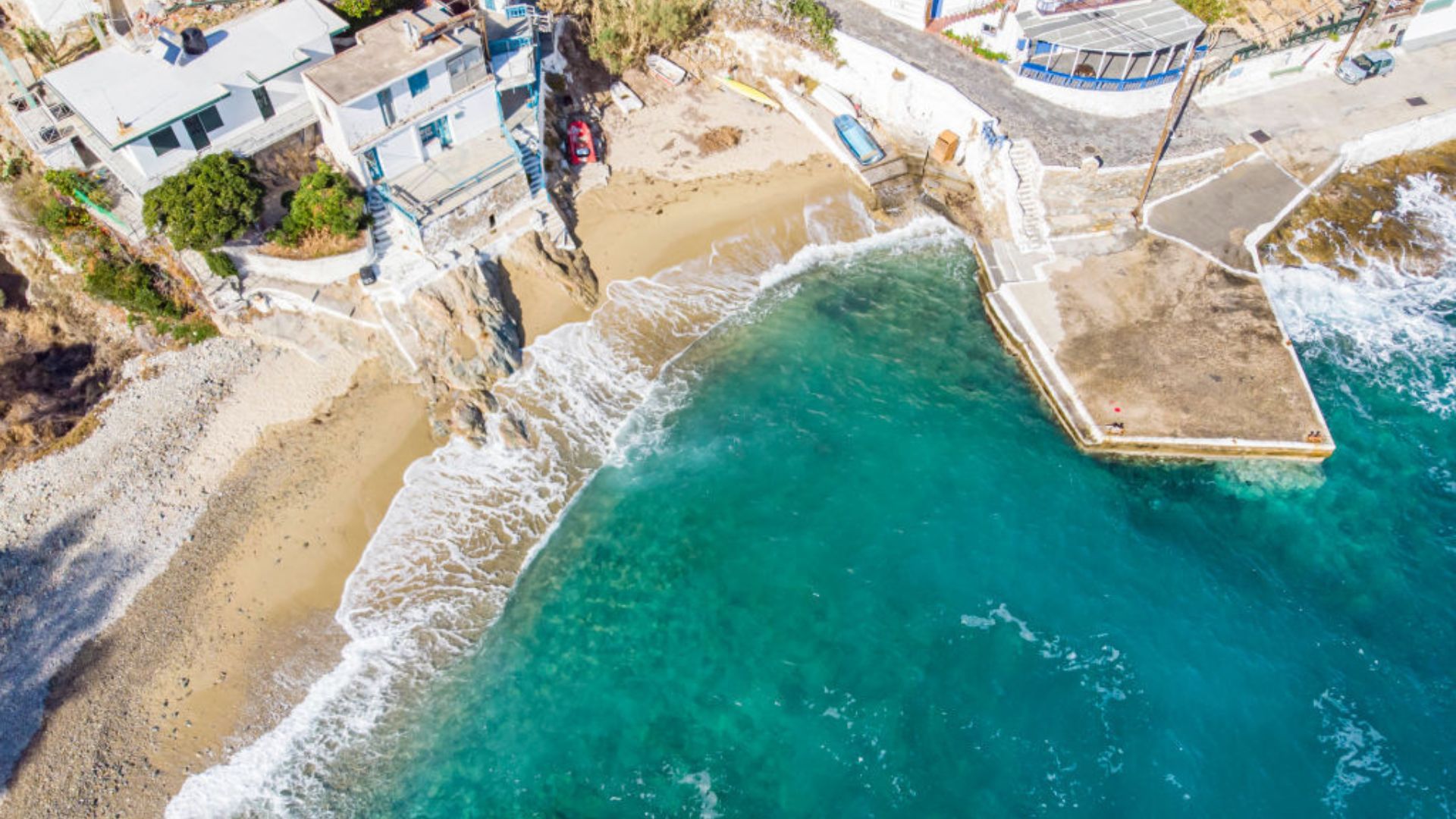
One of the best off-the-beaten-track islands in the Eastern Aegean, Ikaria is an unpretentious and relaxed island, nestled between Mykonos and Samos. It got its name from Icarus, the son of Daedalus, who against his father's command, flew too close to the sun and fell into the sea near the island. With its beautiful beaches, endlessly friendly locals, brilliant local fare and healing thermal waters, it's not the worst place to land.
Despite its laid-back vibes, it's an energetic and vibrant island with a lively nightlife and feasts and all-ages parties that wage on until the early hours. As well as these parties, often thrown to mark religious celebrations (of which there are many), the island is also home to an international music festival, Ikaria festival as well as an annual international chess festival. Then of course there are its beaches; Seychelles Beach easily rivals the beauty of the beaches in its namesake, while Therma beach boasts mineral-rich hot springs. It's no wonder the locals are reportedly famous for their long and healthy lifespans. Speaking of which, don't leave the island without trying pefkomelo, the local pine honey.
Top tip: Look out for a Panigiri while you're there, or try to plan around one. These are traditional feast days and celebrations that start in the afternoon and last until the morning, marking Saint's name days or other religious holidays. People travel from around the country to attend these and the celebrations can be large-scale with hundreds (or even thousands) of people. Expect lots of food, dancing and general joviality.
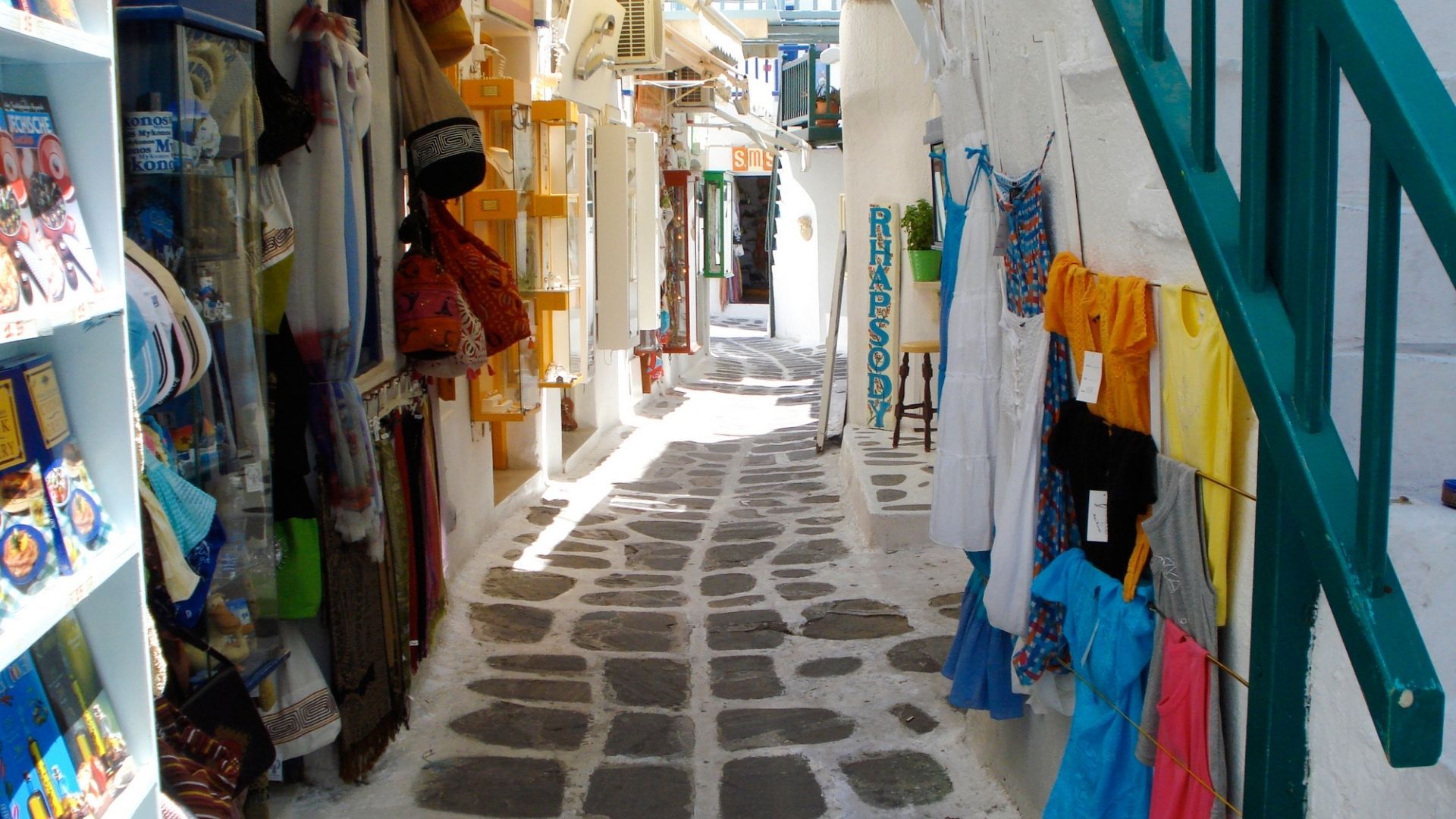
Mykonos is known for its dry and windy climate, windmills, white streets, beautiful beaches - and of course, its nightlife. Despite its party reputation, however, the island caters to all interests and ages. Packed with luxury villas, hotels and premium restaurants, it's undoubtedly the best island for celebrity spotting and real VIP treatment. Start your day people-watching in the old town of Chora with a coffee. Your order, regardless of where you are in Greece should be a fredde espresso: a potent iced black coffee that comes with or without sugar. We recommend getting breakfast in Gioras Bakery, the oldest working bakery on the island which has belonged to the same family for over two centuries. Pick up a spanakopita, a filo pastry with layers of spinach, feta and crunchy, golden pastry. For a luxury dining experience, check out NOA which offers a modern taverna menu, with a big focus on farm-to-table dining.
You're spoilt for choice when it comes to beaches, but our favorite is Agios Sostis beach. Unspoiled, compact, and remote, there are no beach bars (or shelter) at this tranquil beach, so do bring your own towels - and lots of sun lotion. The island is windy, but don't let that fool you into thinking the sun isn't blazing hot. Next to the beach is Kiki's taverna, a haunt favored by locals, and for good reason. Open daily until the sun goes down, the restaurant offers stunning fresh food at reasonable prices.
Consider taking a ferry to Syros, a neighboring island just 30 minutes away from Mykonos which has its own distinct personality. Cosmopolitan and Cycladic, the main town is built amphitheatrically on two hills, making for a unique landscape. It's definitely quieter than Mykonos but it's by no means sleepy and is packed with buzzing coffee shops, restaurants and live music venues.
Top tip: Expensive doesn't equate to good quality, so plan your meals before you head out. It's easy to be coaxed into sitting somewhere with a nice sea view, particularly in the center of Chora and the beaches of Platis Gialos, but prices can be exorbitant and the quality of the food can be comparatively low. The island is brimming with unforgettable eateries, many of which are very reasonable, so plan before you head out. Similarly, research beach bars and restaurants before you visit them - some venues at Platis Gialos charge $50 for sub-par cocktails, while neighboring ones will offer drastically lower prices for the same setting and quality.
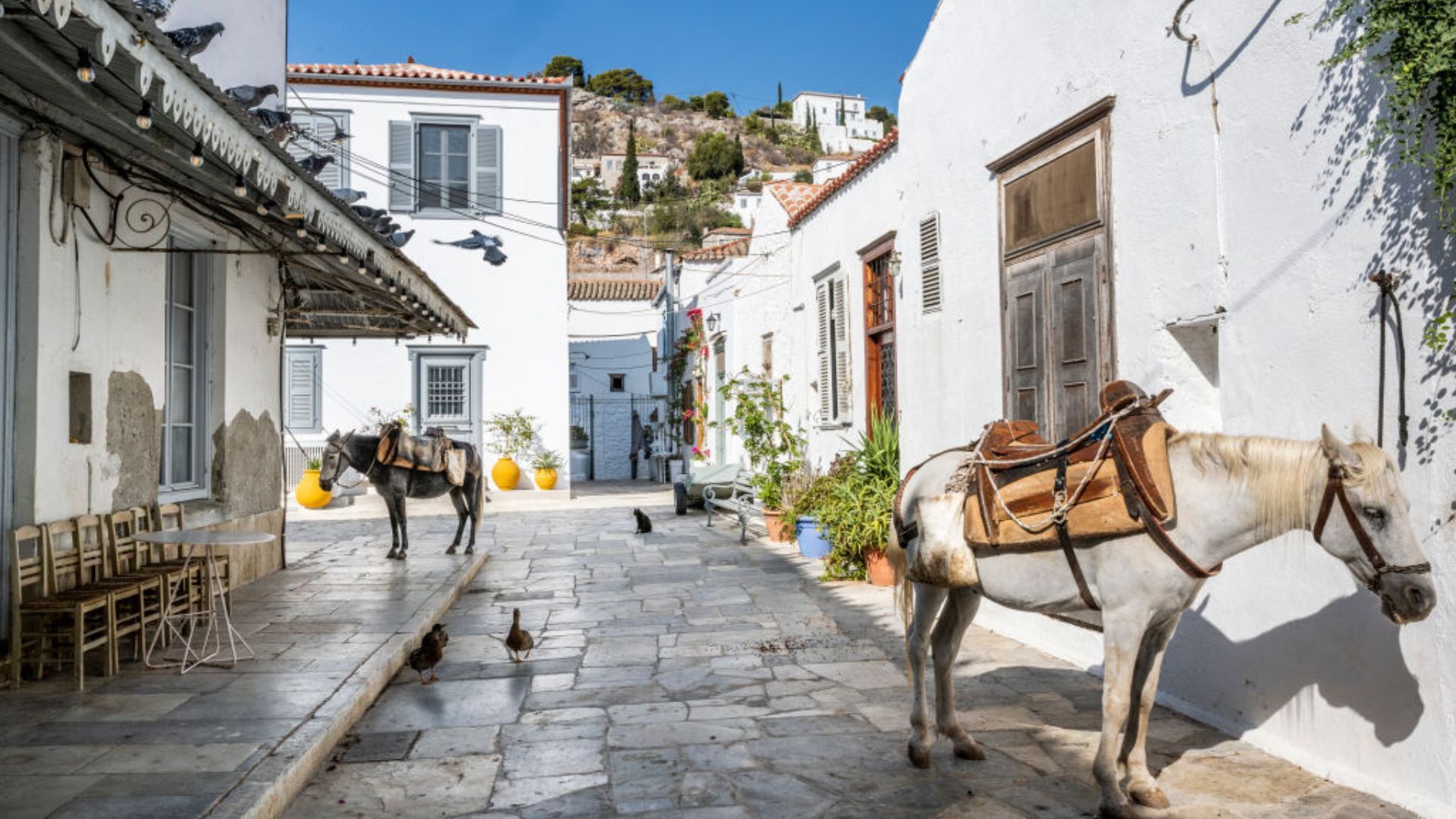
Hydra, or Ydra as it's known in Greece is a quaint, bohemian island which is accessible via a two-hour ferry ride from Athens. It's completely car-free, meaning the only mode of transport is on a donkey, water taxi or on foot - which is how we explored it. It was a famous hotspot in the 1960s and 1970s for artists and musicians, perhaps most famously, Leonard Cohen, who lived on the island on and off for years (his house used to be marked by a plaque and street sign but in recent years, renovation works have made it harder to find). To this day, it has an artistic feel and is still a hotspot for international artists and writers. Spend your days getting lost in the backstreets and climbing the island's bastions before cooling off for a dip in its waters. While the island has some pleasant beaches, they're generally not super accessible by foot - so if that's how you're exploring the island, we'd recommend instead finding a good bathing spot, like Hydronetta - a bar carved into the coastline which serves soft drinks, snacks and cocktails from dusk 'til dawn. Here, you can access the sparkling (but often choppy) seas via a small ladder. There are pleasant beaches in the island but if you're looking for some of the best beaches in Greece, there are plenty of other islands you can go to. For us, Hydra's charm lies in the blissful lack of cars, its narrow streets and craggy coastline and its bohemian vibes. By night, there are scores of lively tavernas and fun bars that stay open until the last customer decides to leave.
Top tip: We'd recommend visiting off-season, in May or October time. At this time of year, accommodation is substantially cheaper, as are the prices in local tavernas and bars.

9. Thessaloniki
Greece's vibrant second city, Thessaloniki offers culture, history, food and adventure, yet for some reason, it often gets overlooked as a city break destination. As far as Greek cities go, Athens can sometimes be overwhelming, but Thessaloniki is decidedly less dizzying - not to mention, much milder, meaning that summers are less sticky and humid. Although it's still throbbing with personality and has a buzzing arts, foodie and music scene, the pace is distinctly slower than the capital.
Start the day with the city's famous bougatsa, a breakfast pastry with custard encased in delicious flakey filo pastry. Walk along the seafront the city is best explored by foot. Marvel at the Walls of Thessaloniki, the churches, monasteries and Byzantine baths, all included in the UNESCO list of World Heritage Sites (the city has 15 on the list in total). Visit the White Tower, a monument and museum at the waterfront of the city, built in the 15th century after the fall of Thessaloniki to the Ottomans. Next go to Aristotelous Square, the central square and beating heart of the city. By this point, you'll be hungry, so it's time to talk about food once again. Although there's a gentle rivalry between Athens and Thessaloniki, the country's second city is where you'll find the best cuisine.
For meat-eaters, Opsopoion Maganeiai, which translates as 'magical cooking' delivers on its promise, serving up plates of exquisitely seasoned steak cuts with a small but well-curated menu of starters. It's fairly small, so book ahead. For vegetarian choices, head to rOOTS Vegetarian & Vegan Place, a metropolitan eatery with an expansive and creative menu. Although it's easy to find vegetarian appetizers everywhere in Greece, finding a dedicated vegetarian restaurant is tricky as a lot of the cuisine is centered around meat. Beyond those places, look out for little 'ouzeries' - small venues that serve glasses of strong local liquors of tsipouro or ouzo accompanied by meze dishes. Meanwhile, the gyros in Thessaloniki are unrivaled: pitas packed with meat, tomato, onion, fries and tzatziki (once again, vegetarian options are easy to come by too, which is unusual in Greece).
Top tip: As per the rest of the country, the hottest months are in summer so the best times to catch the good weather are between July to September. However, in early November the city hosts the International Thessaloniki Film Festival making it one of the best places to visit in November if you're looking for a cultural fix. As it's an international festival, most films will have both English and Greek subtitles.
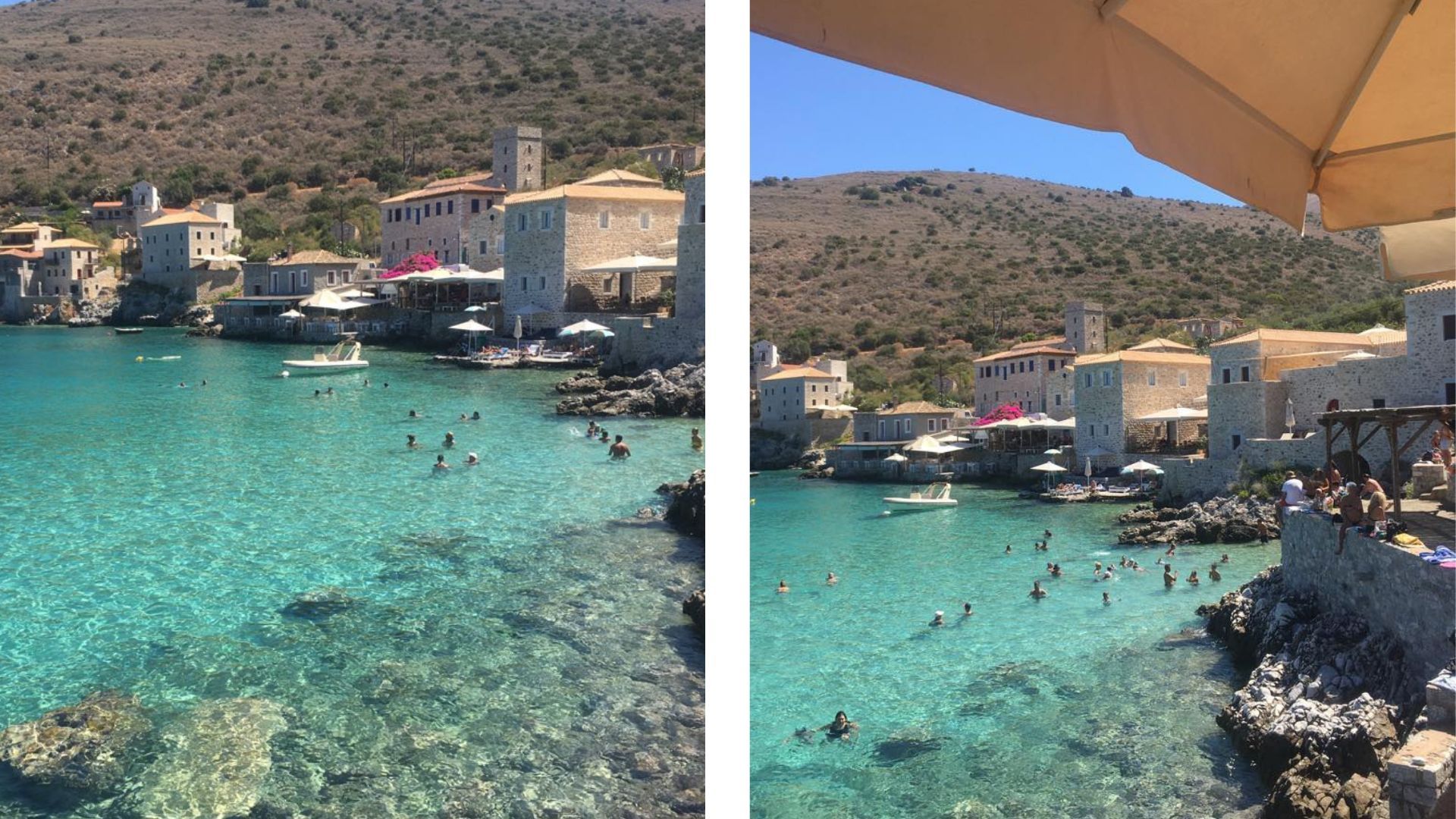
10. Aeropoli / Limeni
Perhaps one of the best hidden gems in Europe, Aeropoli is a popular destination for Greek holiday-makers but less popular with international tourists. The largest town in Mani, Aeropoli is packed with tavernas, buzzing coffee shops and vibrant bars. It's also 3km away from the picturesque village of Limeni.
Aeropoli is perhaps the best vantage point for exploring the region thanks to its countless hotels and rustic guest houses. It's really only accessible by car, but if you do have your own transport, Gytheio and Sparta are easily accessible for daytrips. Kalamata is less than two hours away, so we recommend combining a trip to both if you're planning a trip to the region. It's also close to the Caves of Diros, a large underground network of fantastical rock formations, located just 11km south of the town.
If you visit Aeropoli, don't leave without spending a day in Limeni though, a beautiful port town with sparkling emerald water and rocky cliffs. What makes the landscape particularly impressive, however, is the imposing stone towers which look more like forts or watchtowers, build high against the rugged rocks and roads, with few windows. A local told us that they were intentionally built to look menacing; with each family trying to build above the one next to them to show their seniority and power. The result is a rugged, impressive landscape that contrasts with the sparkling seas below.
Top tip: Don't visit off-season. Unlike more touristy destinations on the list, many businesses close their shutters during the winter months, and driving conditions can become difficult too.
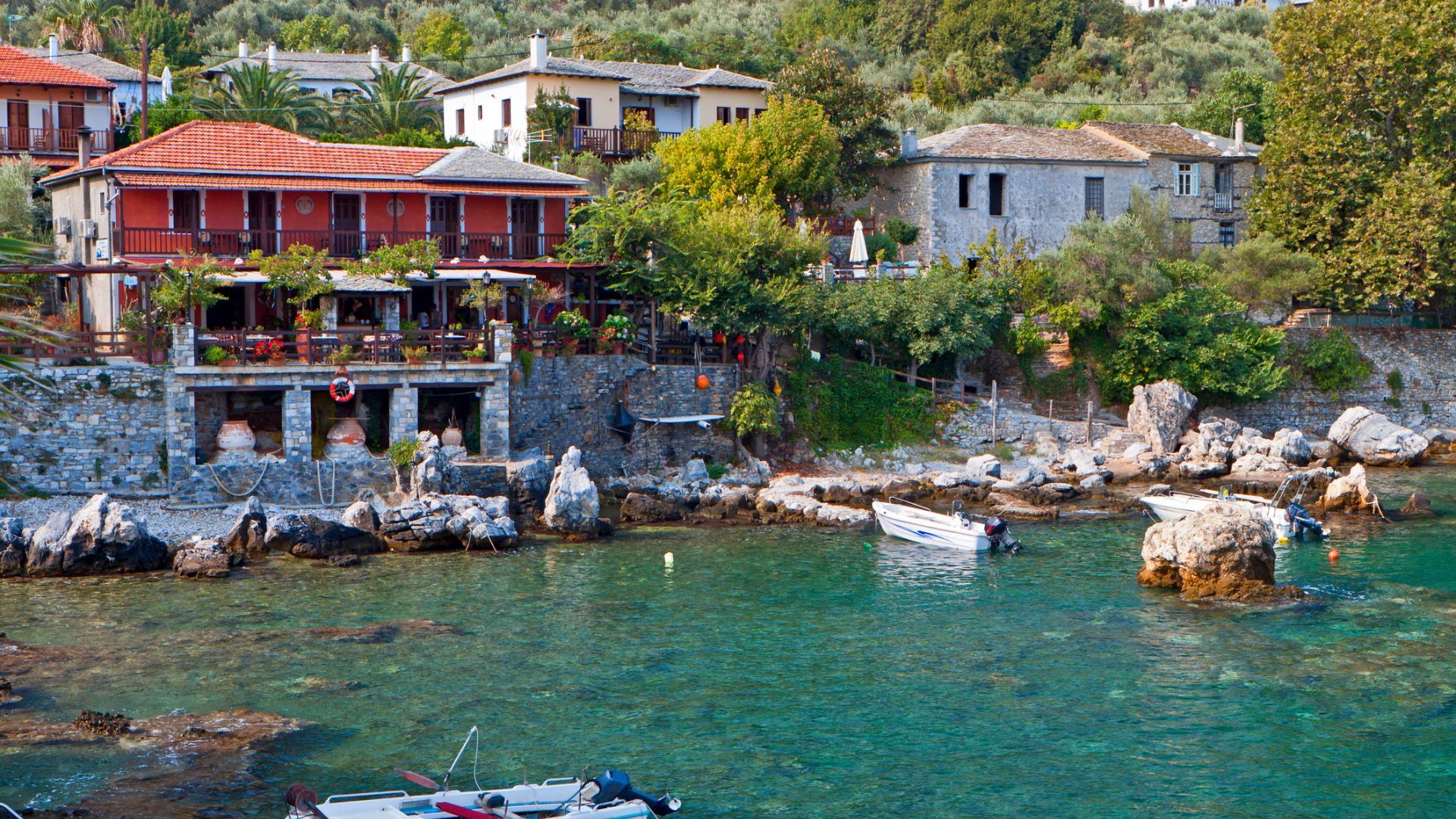
Packed with quaint villages, towering mountains and exotic beaches, Pelion is a mountainous peninsula in Thessaly, the central part of the country. It's close to the major city of Volos, but there are strong transport links from Athens and Thessaloniki too. As with many parts of Greece, it's best explored by car so you can visit as many of its villages as you can, each with their own unique charm. Despite its central mainland location, Pelion feels decidedly off-grid, with its deserted beaches, sleepy villages and rich vegetation.
In winter, head to the ski resort of Agriolefkes in Mount Pelion for an unforgettable winter snow holiday, and in summer, retreat from the world in the village of Makrinitsa, a quaint village with cobblestone streets and grand houses, or Portaria - a lush, green mountainous village. And let's not forget the beaches, Mylopotamos beach is probably the most famous and picturesque, divided into two parts by a dramatic rock formation. Whether you're looking for a beach holiday, hike, or just to wander around the villages, the unique landscape of Pelion accommodates all types of holidaymakers.
Top tip: Think about what type of holiday you want and book accordingly. If you're hoping to ski, it's one of the best places to visit in January but if you want a hiking holiday, consider traveling in springtime when the temperatures are dry but cool. The busiest time for tourists is June, so, much like traveling to the rest of Greece, if you want to get the best flight deals, travel in May or September.
More for You
Donald Trump Sells Private Jet Amid Spiraling Legal Costs
Caitlin Clark at Risk of WNBA Suspension for Recent Conduct
Biden Hit With More Dismal News About the Economy
Carnival Cruise Line warns passengers about a dangerous mistake
‘It doesn’t work’: This Florida waitress says she tried doing what she loved but couldn’t afford to live — can collecting degrees just leave you feeling burned?
What Vitamin Deficiency Might Cause You to Feel Cold?
A Smart Hack To Open A Can If You're Ever Without An Opener
Rolled Oats vs. Old-Fashioned Oats: Quaker Oats Explains the Difference
25 Classic Comedies That Are Still Laugh Out Loud Funny Today
The best college on the East Coast is not Harvard, based on data. See the top 50.
Do you know the average income for retirees in America? How do you stack up?
Marjorie Taylor Greene Spurs Flood of 'Replace Trump' Posts
What Is the Average Height for Women?
‘I gave up a job that I loved passionately’: My husband secretly set up a trust that includes our home and his investments. What should I do?
Man lives debt-free in cob home that only cost $200 to build: ‘It’s just beautiful’
Breakthrough: Nanoparticle Eats Plaque Responsible for Heart Attacks
Carnival Cruise and Royal Caribbean make popular smoking changes
Why You Should Keep A Bowl Of Coffee Grounds Out In Your Kitchen
The 5 worst things you can do with your inheritance, according to a financial planner
Trump, Defeated

IMAGES
VIDEO
COMMENTS
1. Museum of the Olive and Greek Olive Oil. 290. Speciality Museums. The Museum of the Olive and Greek Olive Oil, in Sparta (Peloponnese), transports you to the culture, history and technology of the olive and olive oil production in the Greek realm, from prehistoric…. See ways to experience (37) 2. Leonidas Monument.
4. Gaze at Ancient Mosaics within the House of Mosaics. Another compelling reason to visit Sparti, Greece is to see the exceptional collection of mosaics unearthed during archeological excavations in 1872 and 1897. In total, 170 mosaic pavements were discovered in Sparta's ancient neighbourhoods.
Sparta was the ancient rival of Athens, known for its fierce warriors and military culture (as showcased in the historically inaccurate movie 300).These days, the city doesn't get the visitors Athens does but it does still have a lot of ruins to explore.. While Sparta is much smaller than Greece's capital, there is no shortage of things to do, excursions to take, and places to eat when you ...
Monemvasia. Discover the best attractions in Sparta including Museum of the Olive & Greek Olive Oil, Ancient Sparta, and King Leonidas Statue.
This difference is even more apparent in Sparta than in other cities of Greece (take Athens for example). The reason is dual; first, ancient Spartans were warriors, not creators of grand buildings and monuments. ... The 10 Best Places to Visit in Greece. 4 Jan 2020. 10 Sights to Tour in Athens and Bring Greek Mythology to Life. 30 Dec 2019. Top ...
Archaeological Site of the Acropolis of Sparta. 45. Ancient Ruins. By ronrT9847RJ. Entry was free and there is plenty of parking. The acropolis is still there as are several ruins. See ways to experience (2) 10. Sainopouleio Amphitheater.
9. Archaeological Site of the Acropolis of Sparta. 45. Ancient Ruins. By ronrT9847RJ. Entry was free and there is plenty of parking. The acropolis is still there as are several ruins. See ways to experience (2) 10.
Explore Sparta holidays and discover the best time and places to visit. Explore Sparta holidays and discover the best time and places to visit. Lonely Planet ... which is probably why so few traces are left of a remarkable people. At the height of their power, Greece's toughest, incorruptible, legendary warriors triumphed over Athens and the ...
Sparta Tourism: Tripadvisor has 6,101 reviews of Sparta Hotels, Attractions, and Restaurants making it your best Sparta resource. ... Greece. Peloponnese. Laconia Region. Sparta Municipality. Sparta. ... Places to see, ways to wander, and signature experiences. See all. 2022. Mystras. 935. Historic Sites. Museum of the Olive and Greek Olive Oil ...
However, after the liberation of Greece from the Ottomans, king Otto of Greece ordered in the 1830s the foundation of new Sparta to honor the ancient glory of the place. This new town was the first town in Greece to be constructed on an architectural plan. This town is found on the way to popular places, like Monemvasia, Elafonissos and Gythio.
Gaze at Ancient Mosaics within the House of Mosaics. Another compelling reason to visit Sparti, Greece is to see the exceptional collection of mosaics unearthed during archeological excavations in 1872 and 1897. In total, 170 mosaic pavements were discovered in Sparta's ancient neighbourhoods.
Mainland. Peloponnese. Sparta. Surrounded by mounts Taygetos and Parnon, Sparta was once the kingdom of Menelaus and his beautiful queen, the most beautiful of all mortal women of her age, Helen. But Aphrodite had promised Paris of Troy the most beautiful woman on earth in return of a favour, so the Trojan prince came to Sparta to claim his trophy.
The Sainopouleio Sparta Theatre is located in a small district called Magoula, part of the modern Sparta city in Laconia. Sainopouleio Sparta Theatre/ Sainopouleio Amphitheatre is one of the most beautiful theaters in Greece. It is easy to locate and visit this Amphitheatre as it is situated on the National highway of Sparta-Kalamata.
There's an ancient theatre, Sanctuary of Athena Halkioitou, stoas, the ' round building ' and remains of later Byzantine churches. There are good information panels. On the north side of the town of Sparta are remains of the Sanctuary of Artemis Orthia. To get here, head to the King Leonidas statue that belligerently hefts its sword and shield ...
General information. Sparti Town: Sparti is the capital of Lakonia, eastern Peloponnese. It lies in the middle of a beautiful valley, in the exact same area where the ancient site was found. Sparti is a modern town built in the 1830s according to an architectural plan. In fact, it is among the few towns in Greece that have been based on a plan ...
The scenic town of Sparti is nestled in the mountains of eastern Peloponnese. As the capital of Laconia, it has attractive buildings, parks, and other areas for tourists to peruse. Unlike many towns in Greece, Sparti was designed by a plan. Its broad streets and city squares are ideal for an afternoon stroll. The town was built in the 1830s on ...
Spárti's limited appeal is its very ordinariness - its pedestrianized side streets, café-lined squares, orange trees and evening vólta. The reason for coming here is basically to see Mystra, the Byzantine town, 5km to the west, which once controlled great swaths of the medieval world. Brief history.
The Museum of the Olive and Greek Olive Oil offers you the opportunity to see the very first testimonies about the presence of the olive tree and the production of olive oil in Greece: Rare fossilized olive leaves, 50,000-60,000 years old, from the island of Santorini, the oldest findings offering proof of the presence of the olive tree en ...
The most interesting sites in Sparti are the two museums, both found in the city center: the Archaeological Museum that hosts excavations from the ancient town of Sparta, and the Museum of Olive Oil that narrates the tradition of olive oil pressing, as Sparti is a region rich in quality oil production. In close distance from Sparti is the ...
The modern city of Sparti Greece was founded to commemorate the famous ancient town of Sparta. Until the beginning of the 19th century, Sparti was just a small village. However, in 1834, after the War of Independence, King Otto of Greece decreed that the village would be expanded and a new city would be erected at the site of the ancient Sparti.
Choosing the best places to visit in Greece is an almost impossible task. Home to hundreds of islands, buzzing metropolitan cities steeped in history and culture, and a coastline that spans almost ...